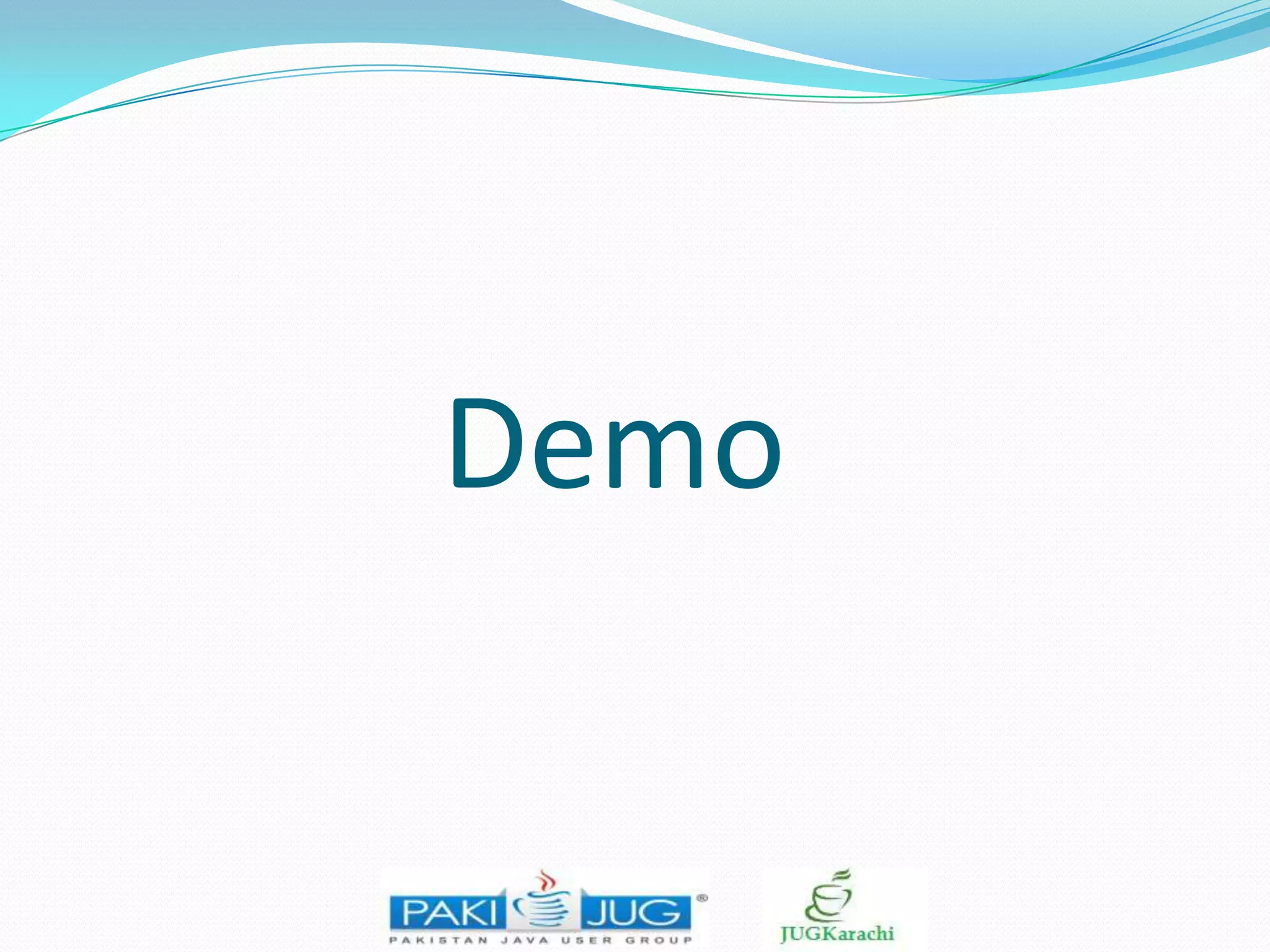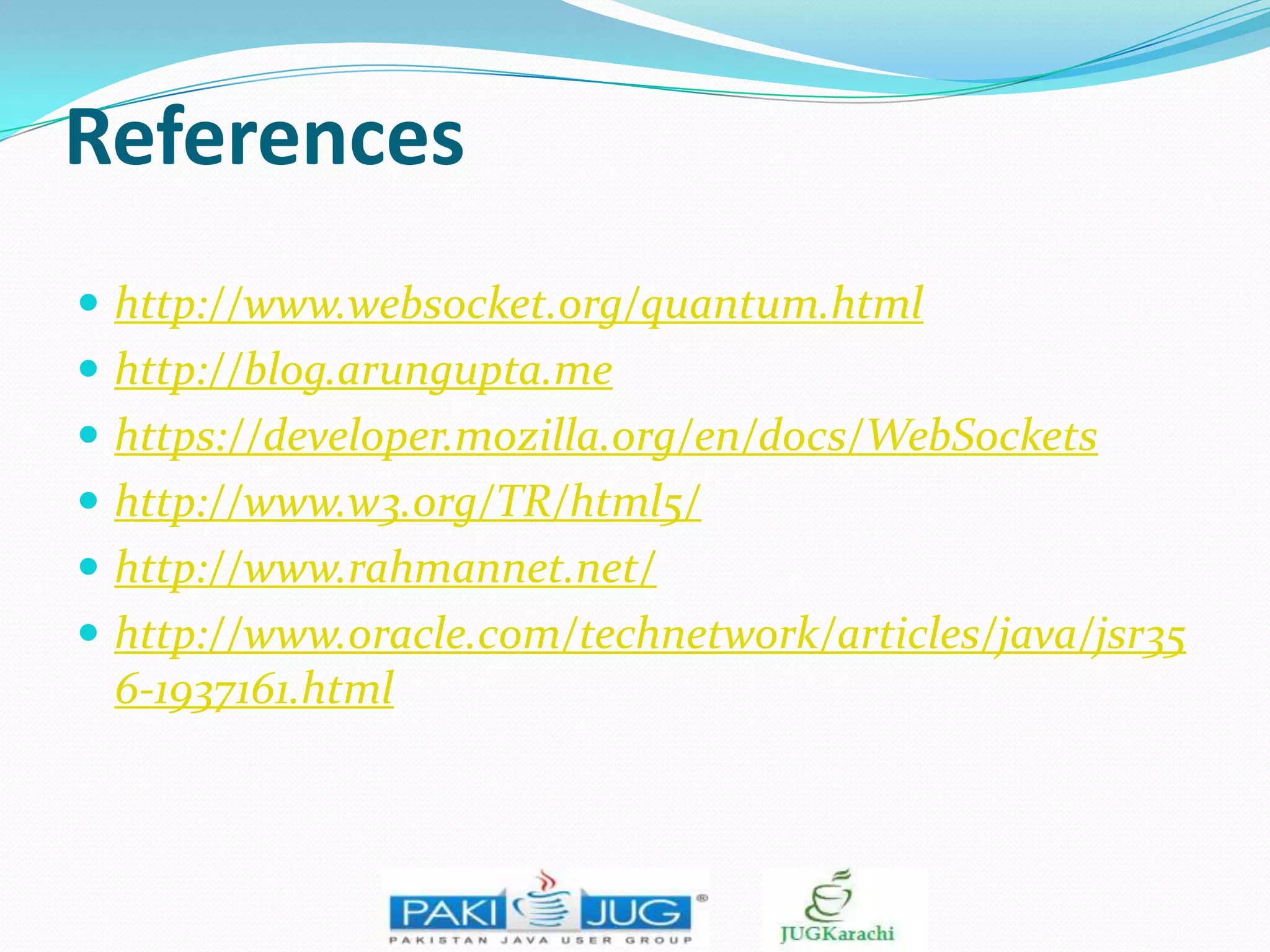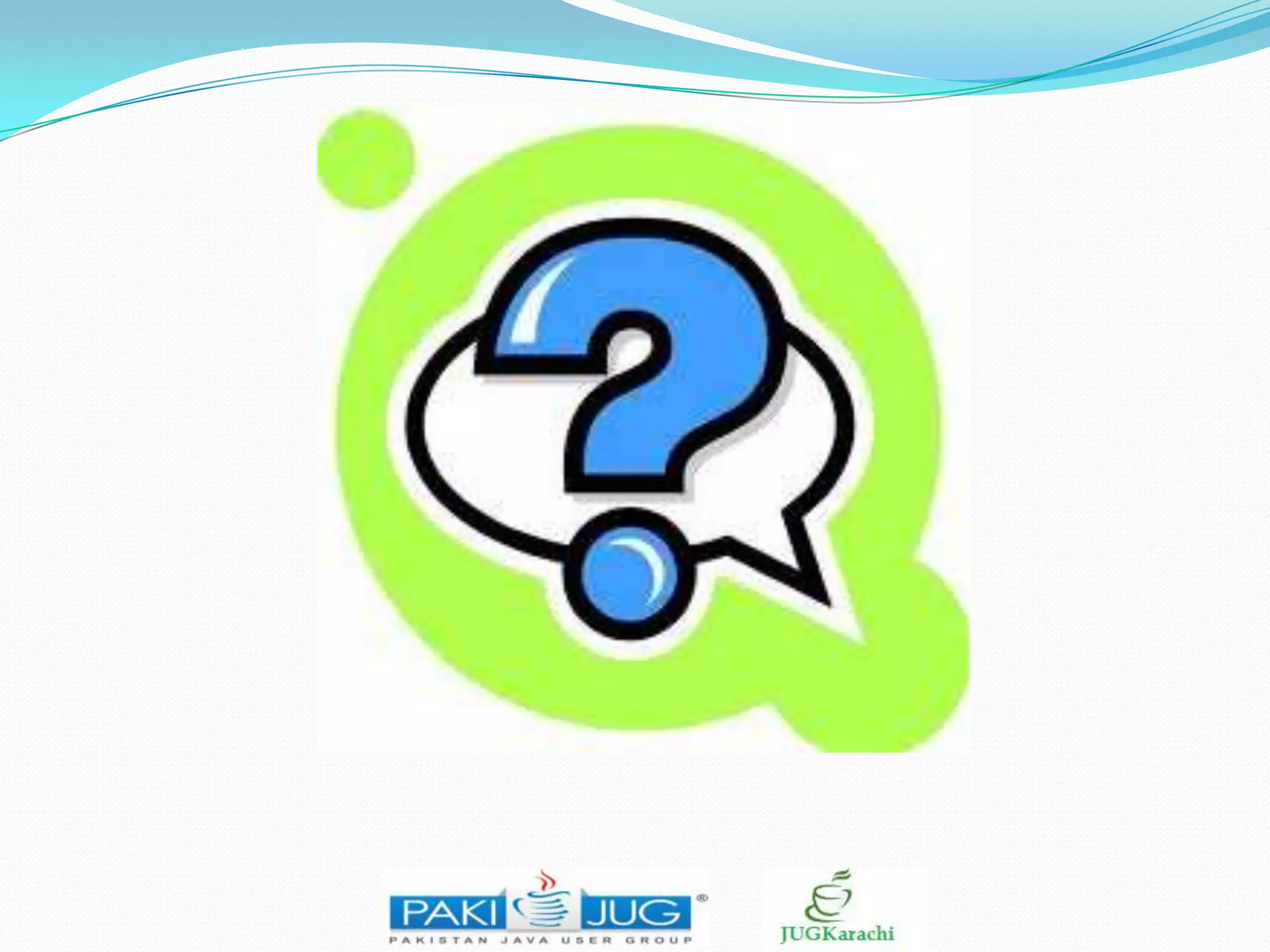The document presents an overview of WebSockets in web applications, highlighting their importance for real-time communication where traditional HTTP methods fall short. It discusses the Java EE 7 framework's support for WebSockets, detailing how to create and deploy WebSocket endpoints, including example code for both server and client implementations. The advantages of using WebSockets over HTTP, such as reduced latency and lower network overhead, are emphasized, making them suitable for modern interactive applications.
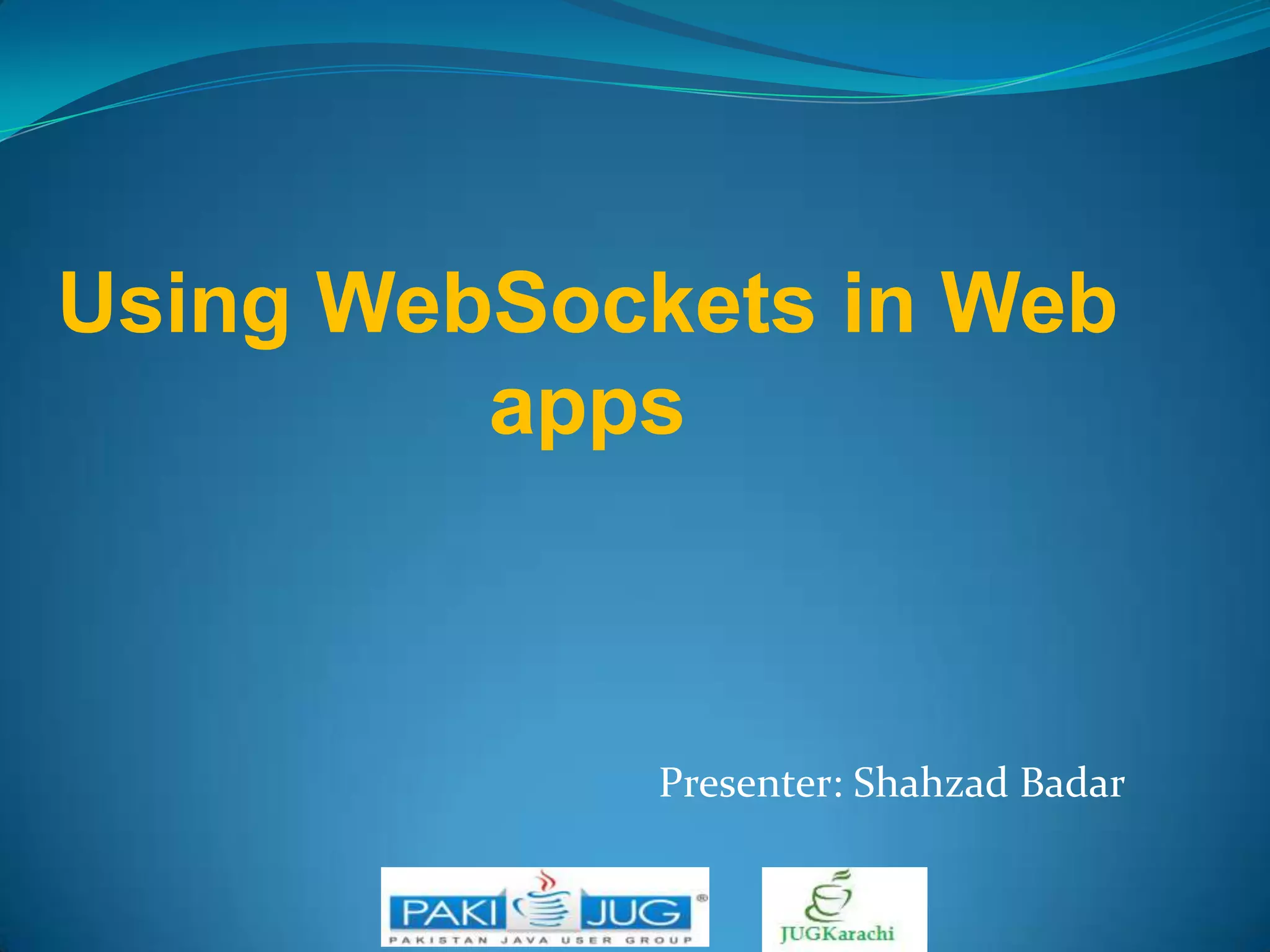


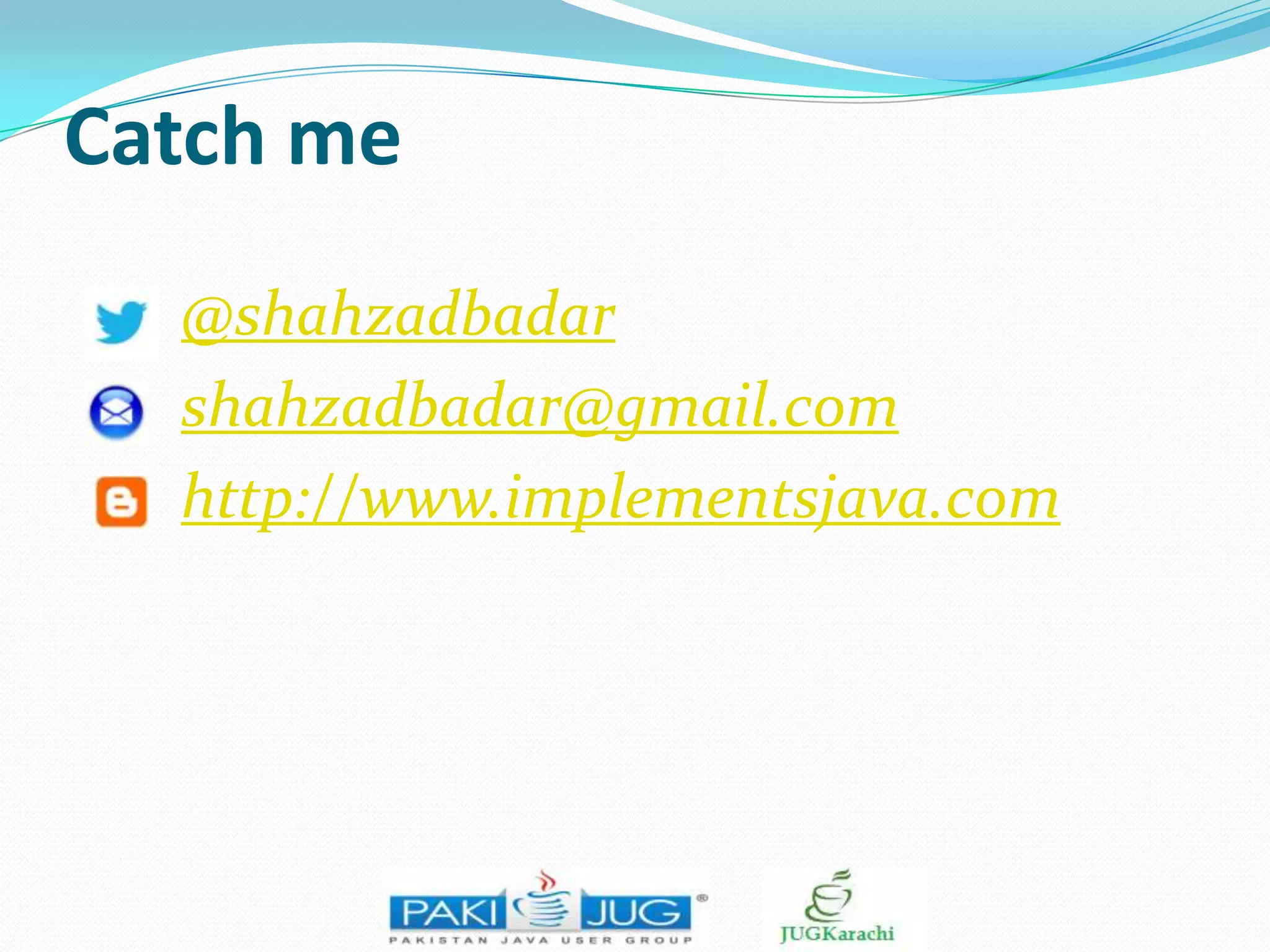
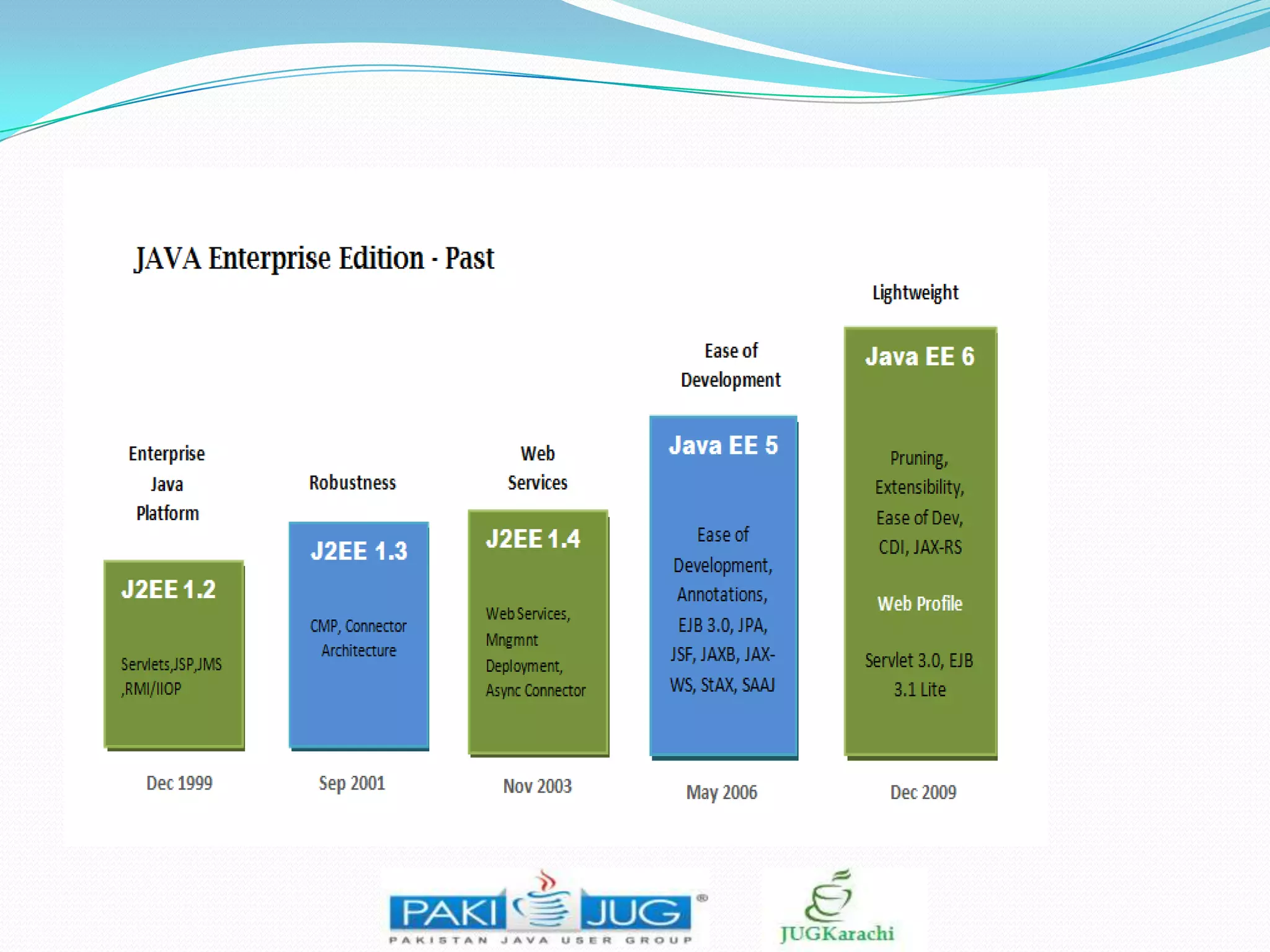

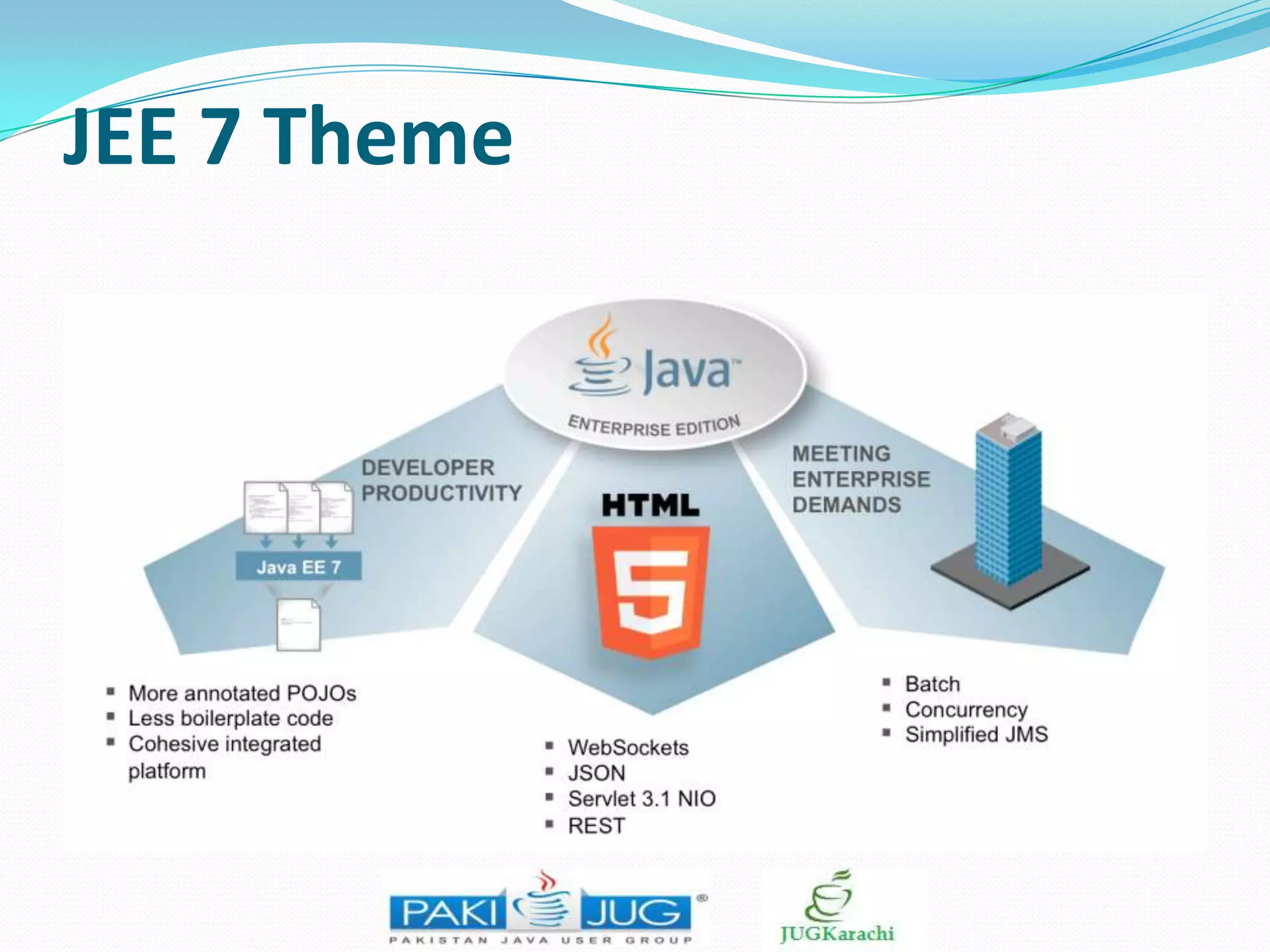
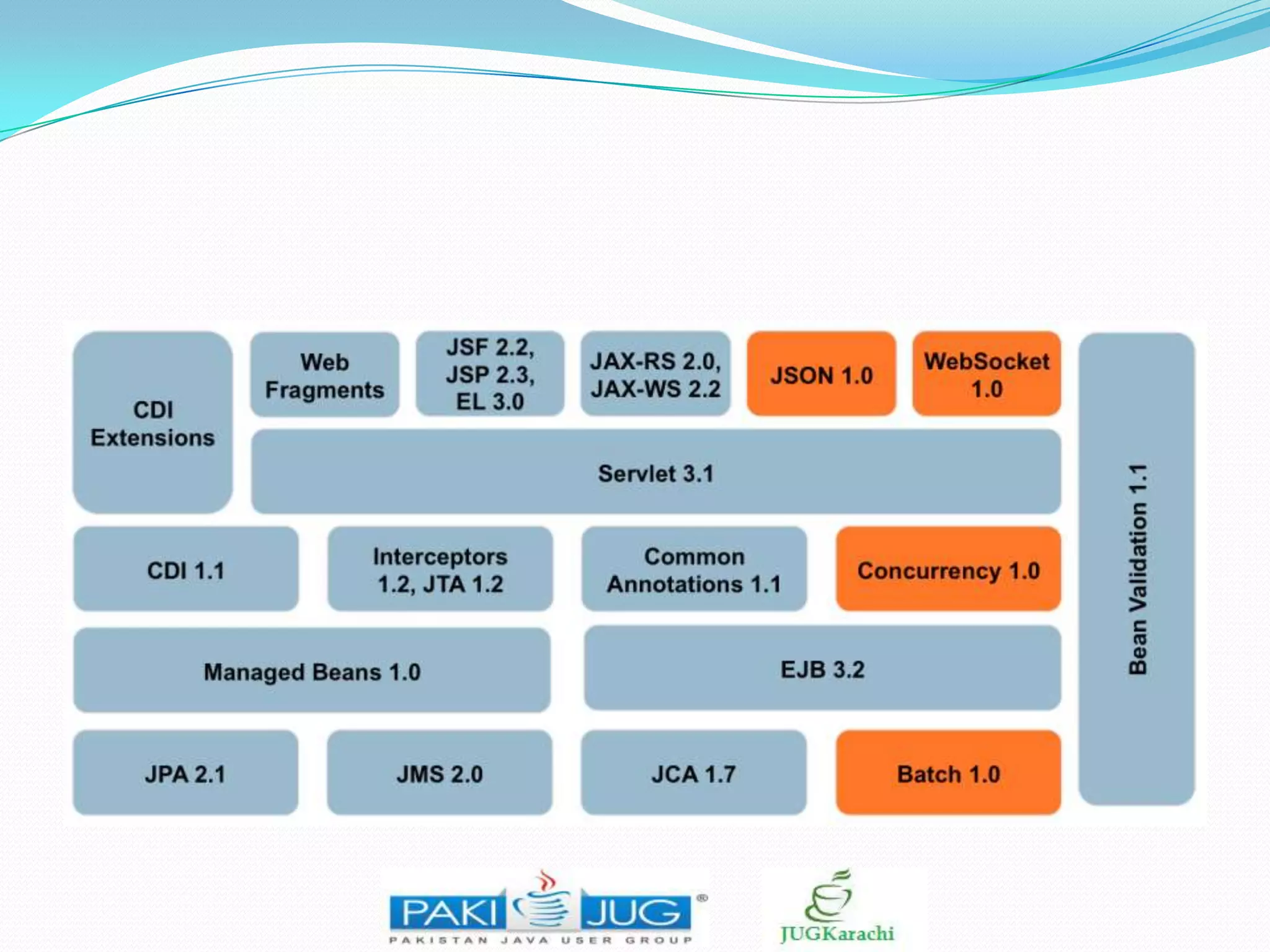
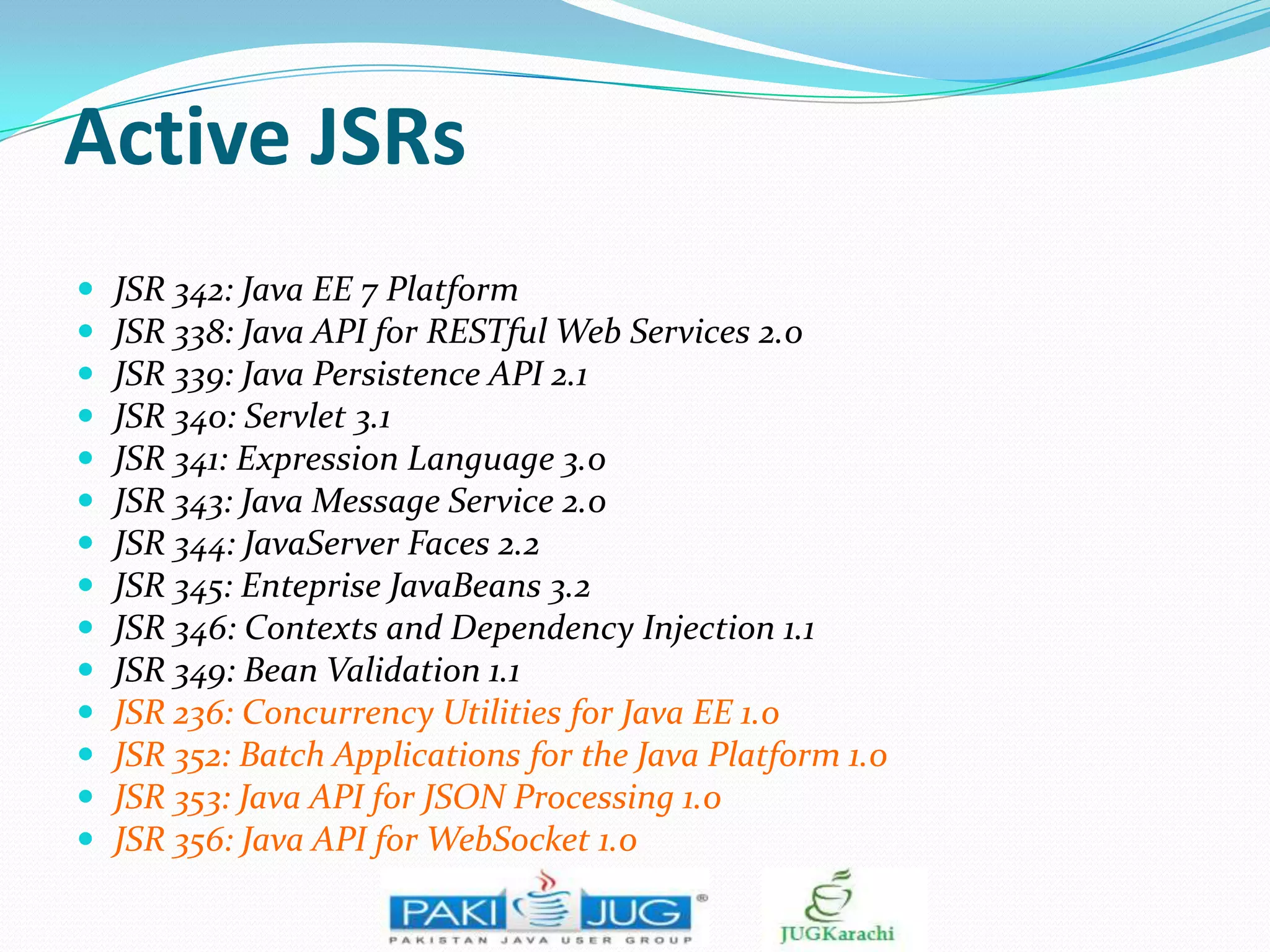
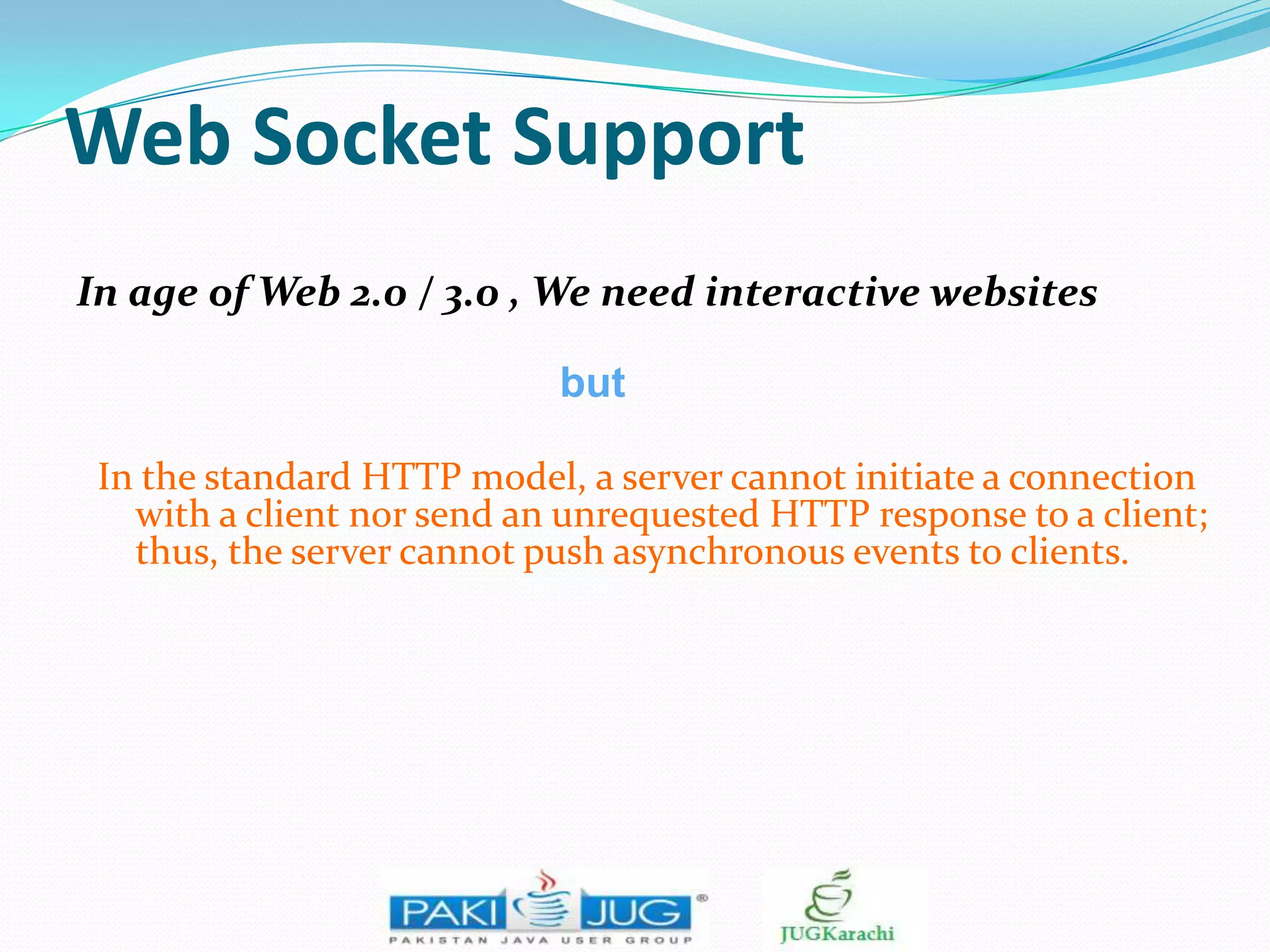
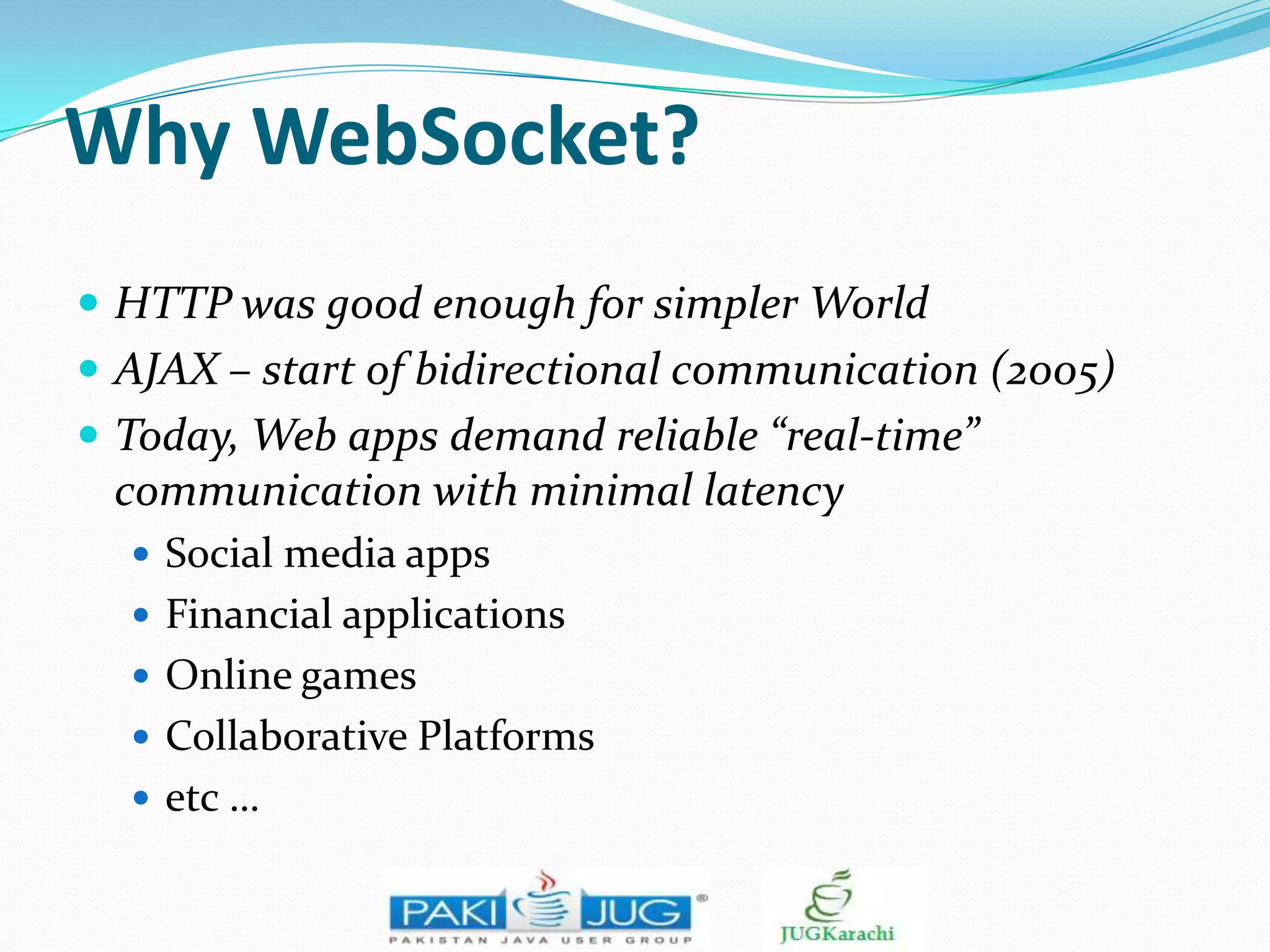
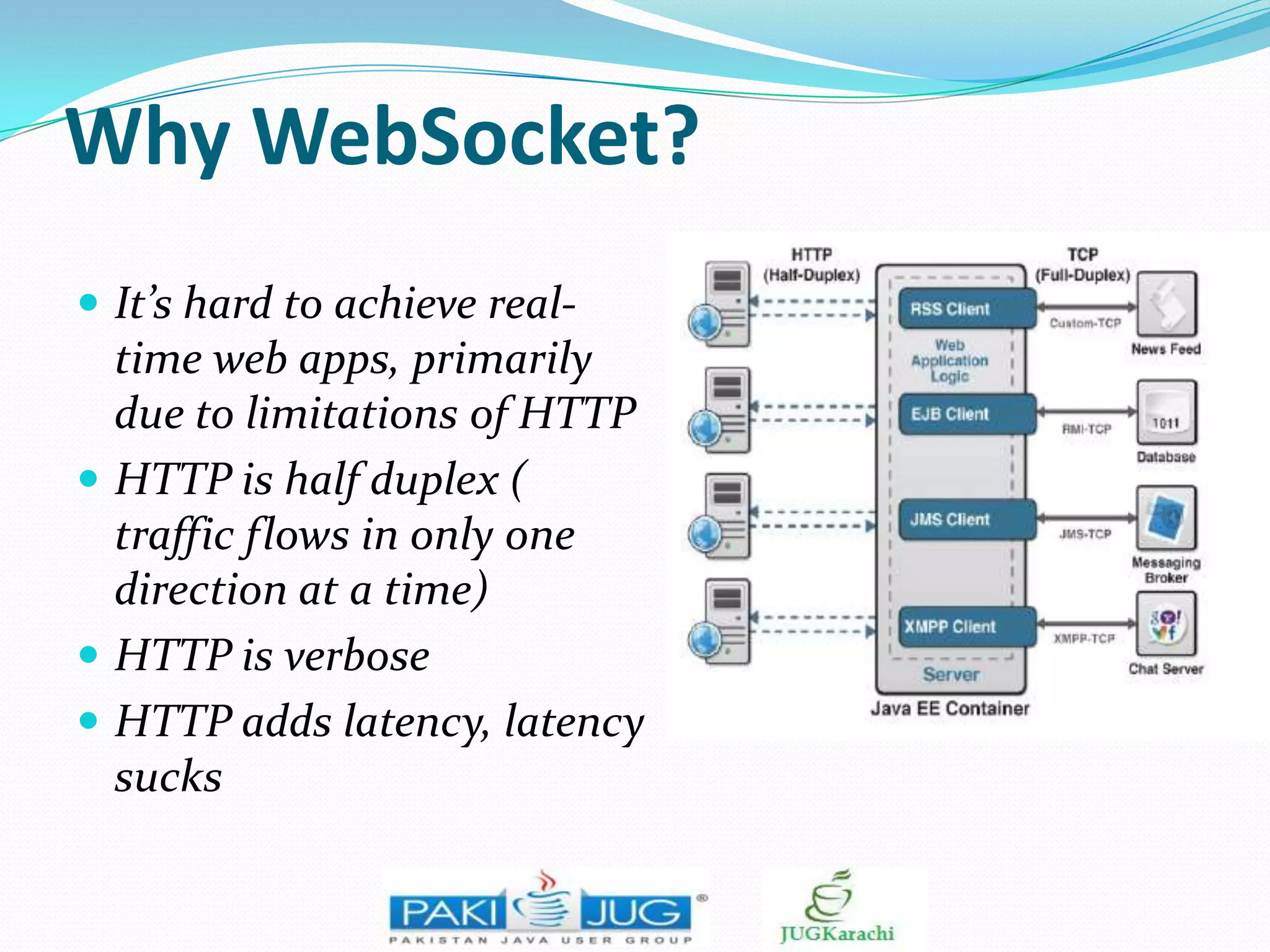
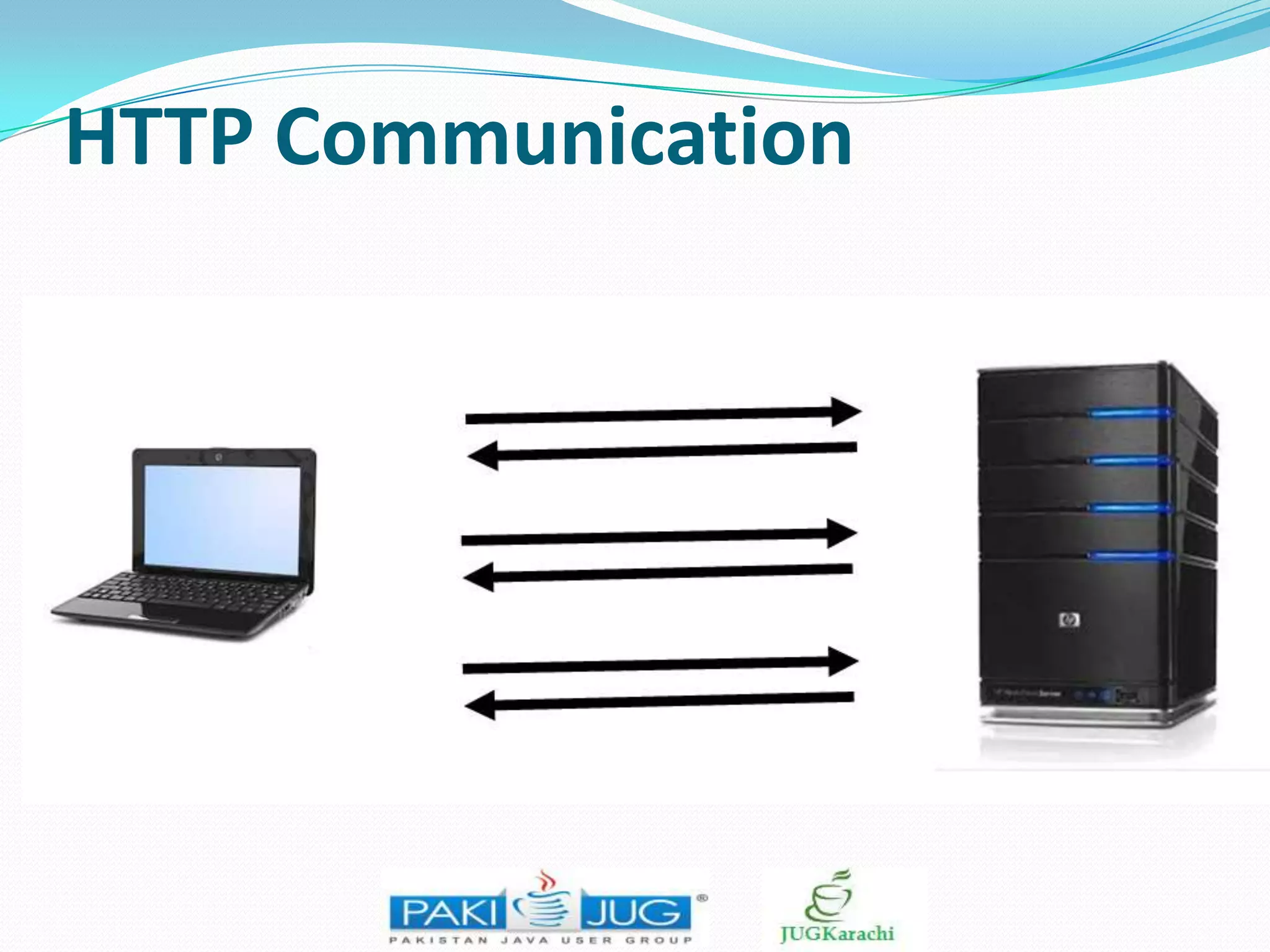
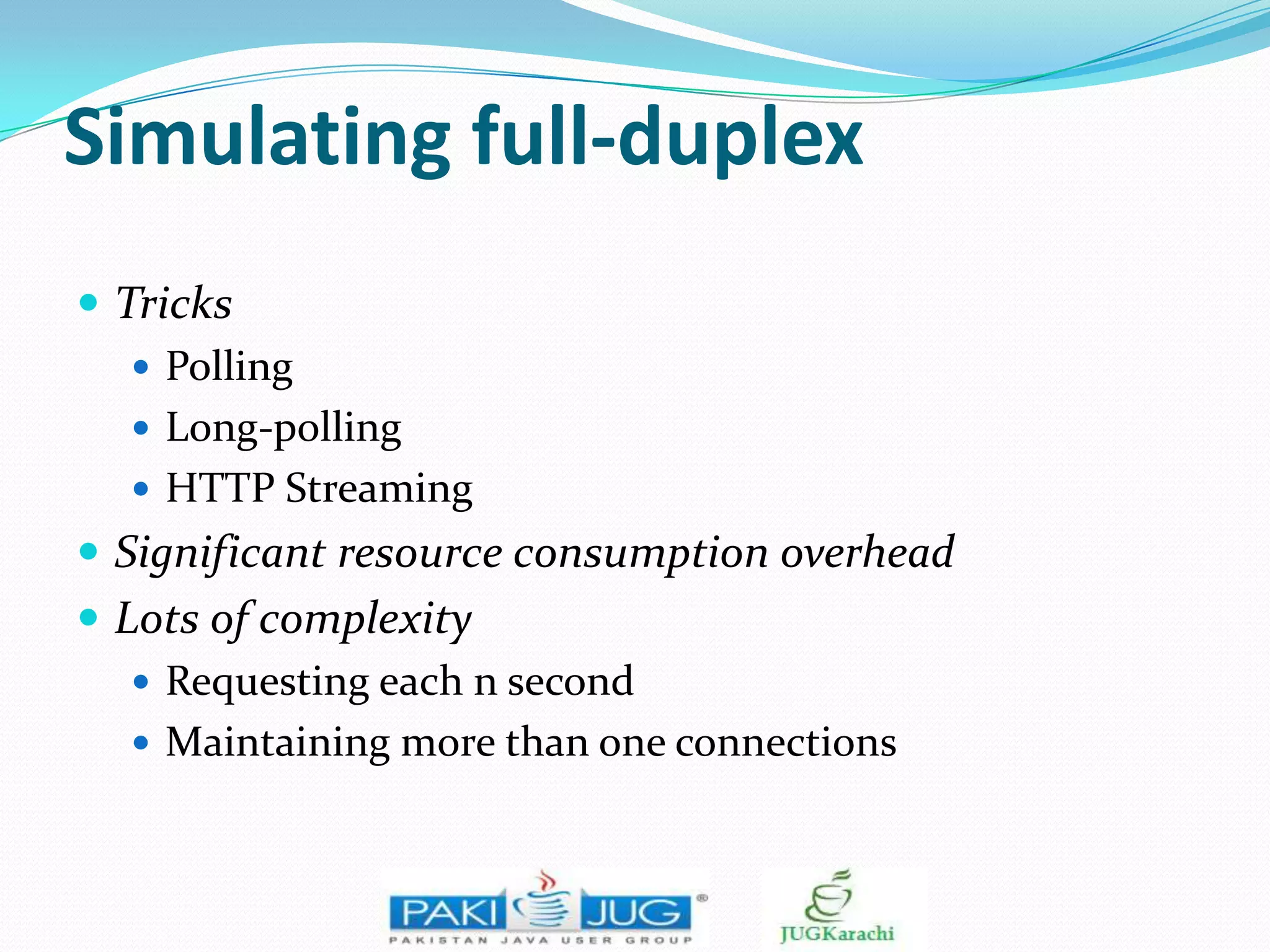
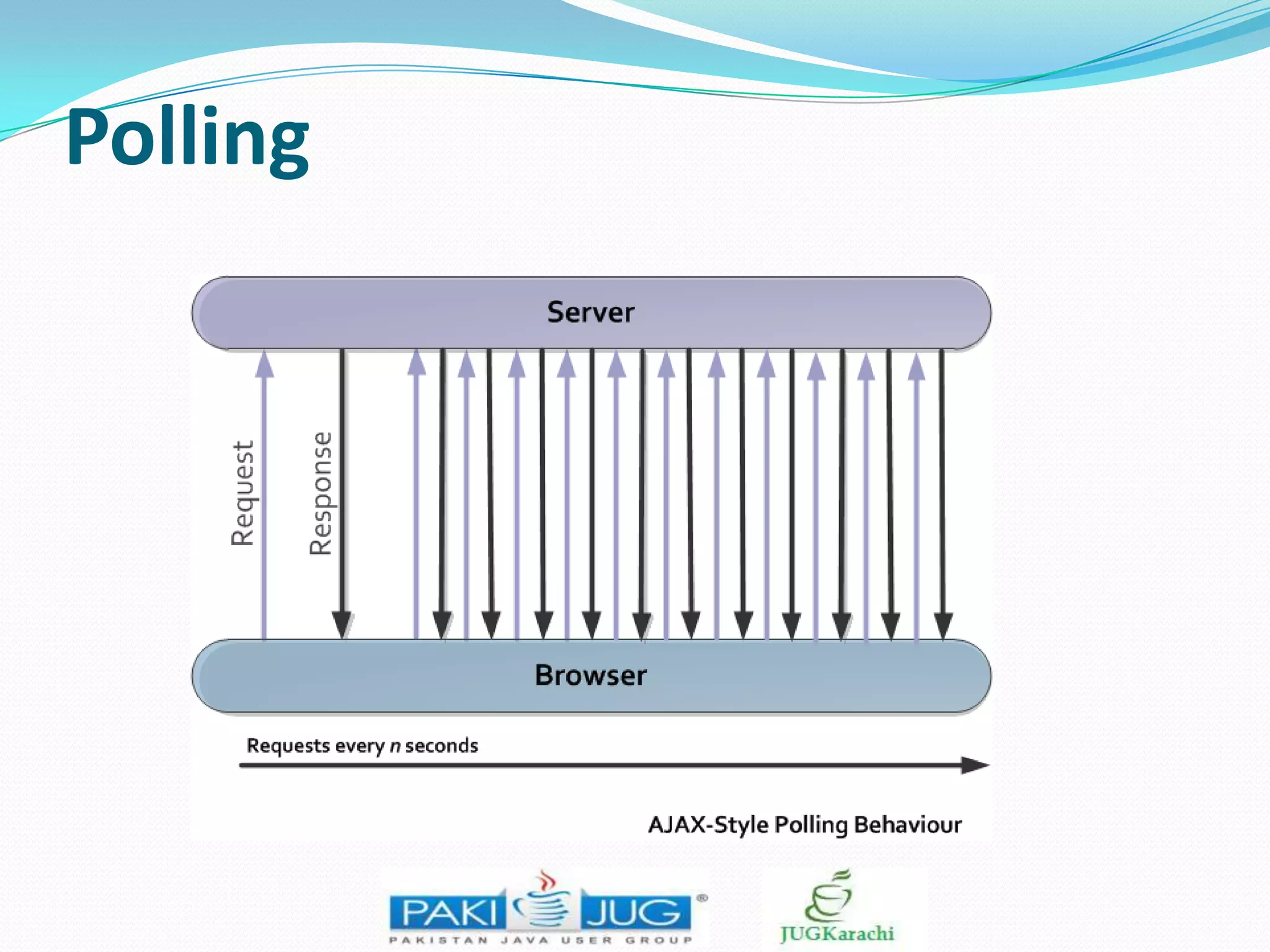
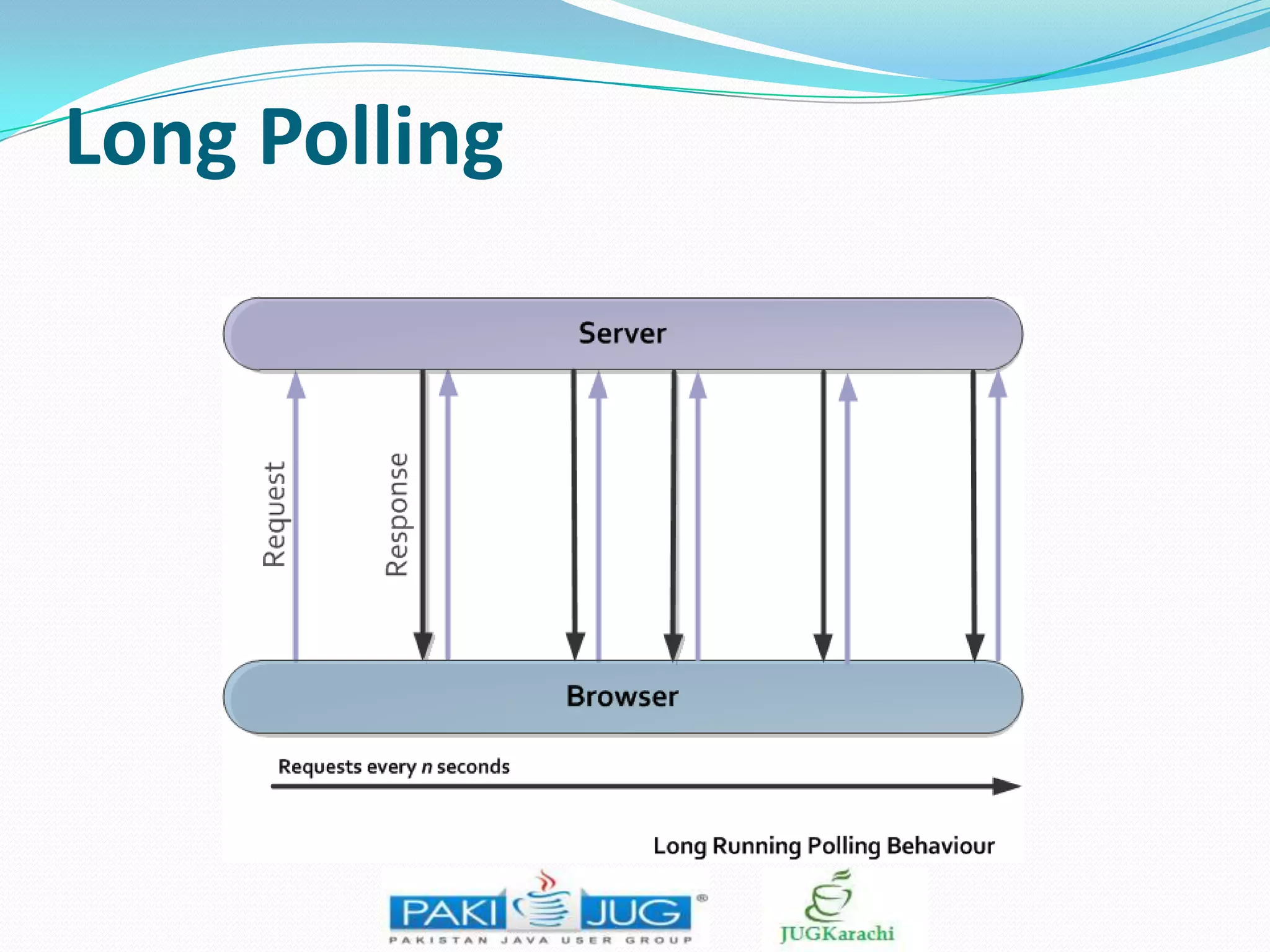
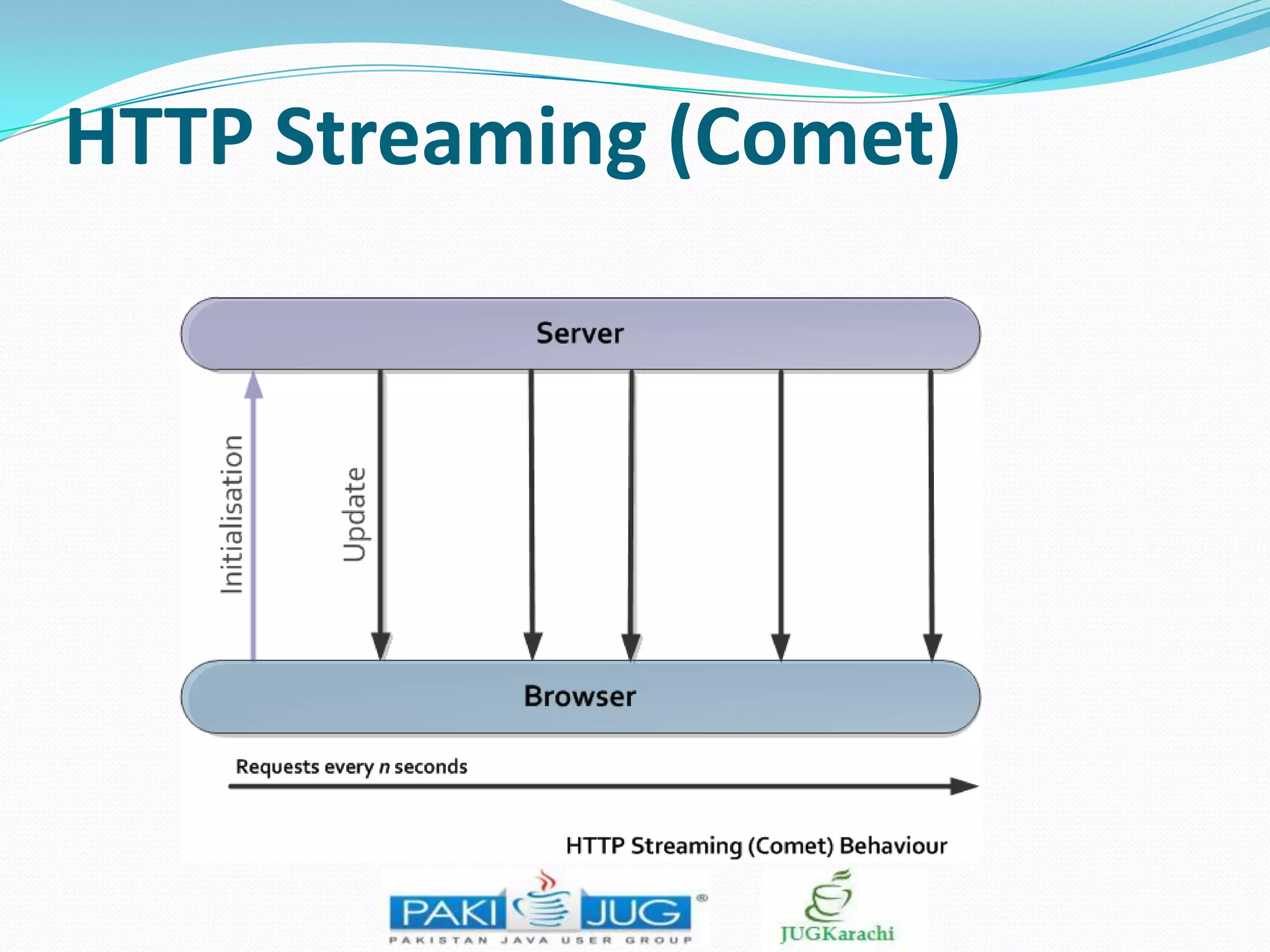


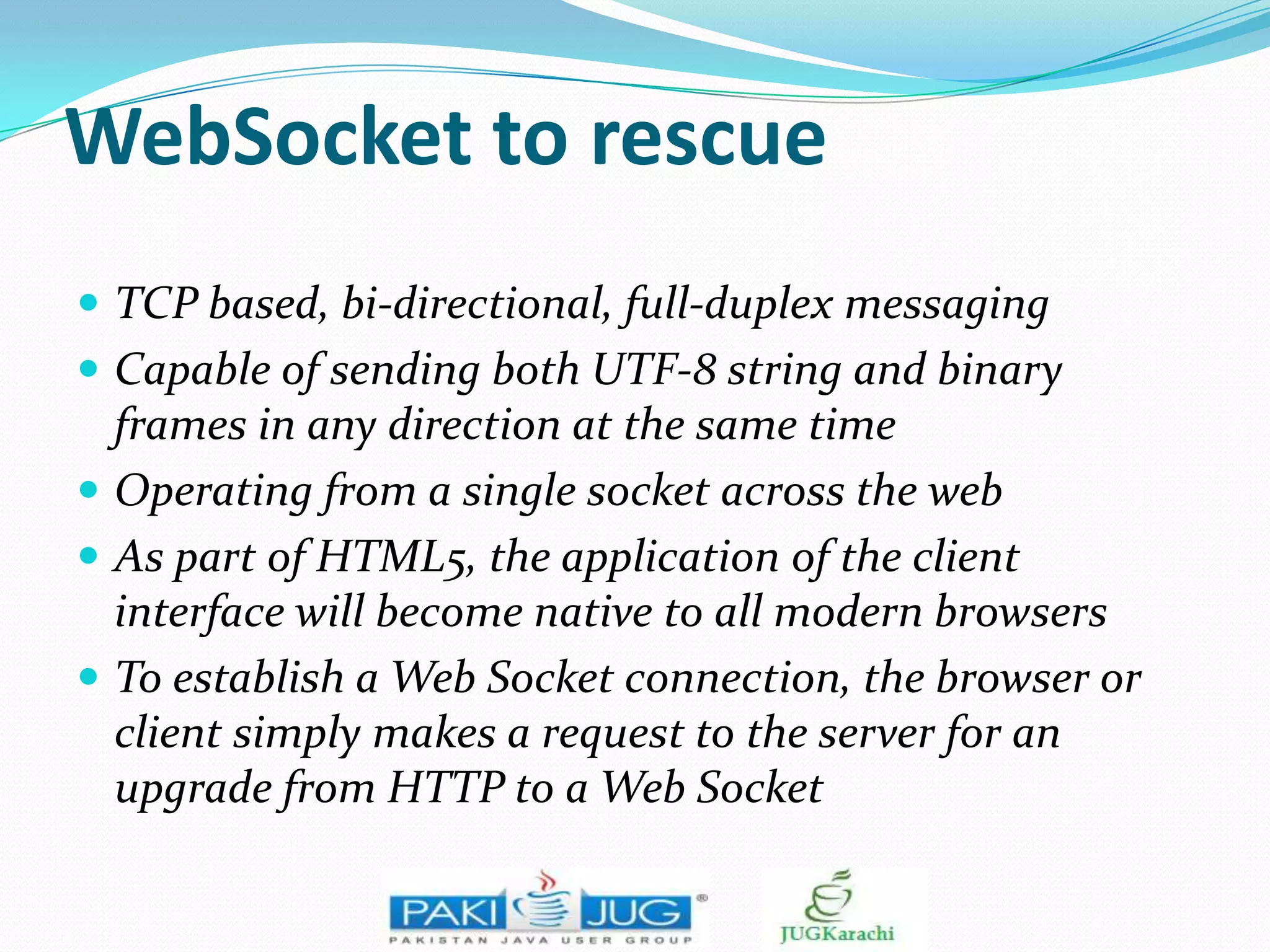
![HTML5 Web Sockets!
Use case A: 1,000 clients receive 1 message per second:
Network throughput is (2 x 1,000) = 2,000 bytes =
16,000 bits per second (0.015 Mbps) [was 6.6 Mbps]
Use case B: 10,000 clients receive 1 message per second:
Network throughput is (2 x 10,000) = 20,000 bytes =
160,000 bits per second (0.153 Mbps) [was 66 Mbps]
Use case C: 100,000 clients receive 1 message per
second: Network throughput is (2 x 100,000) = 200,000
bytes = 1,600,000 bits per second (1.526 Mbps) [was
665 Mbps]](https://image.slidesharecdn.com/javaee7-websockets-140107055901-phpapp01/75/WebSockets-in-JEE-7-21-2048.jpg)
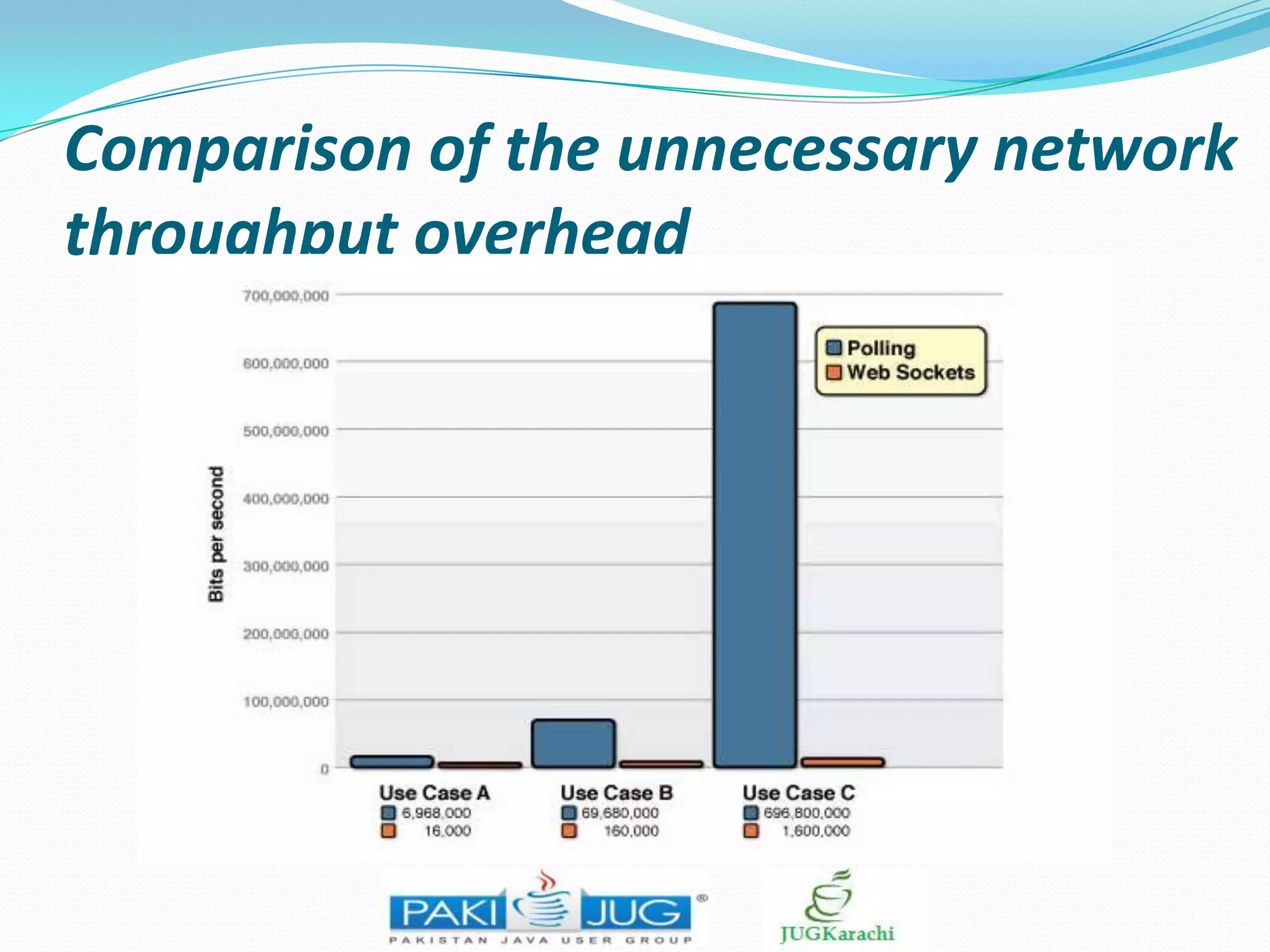
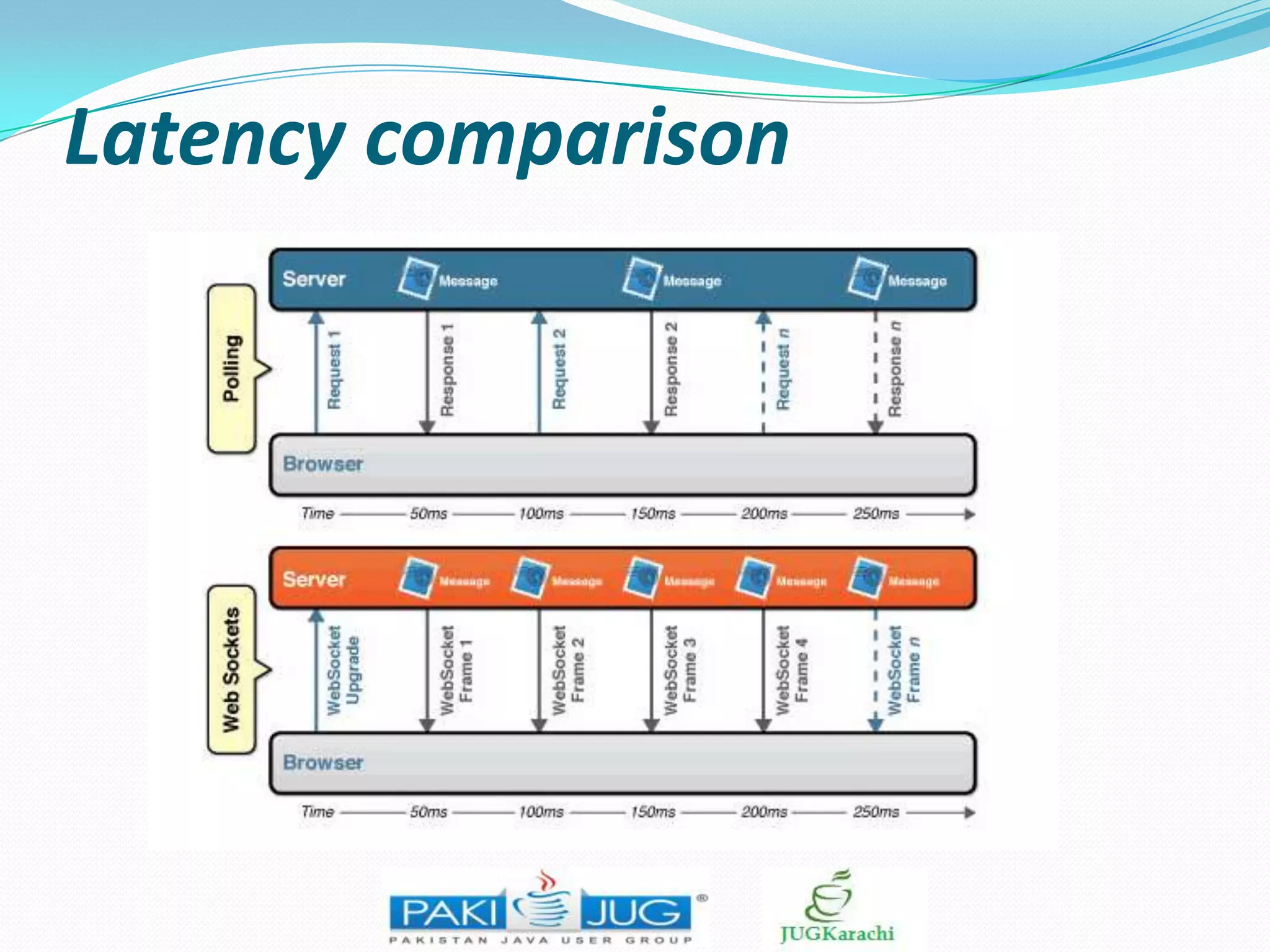
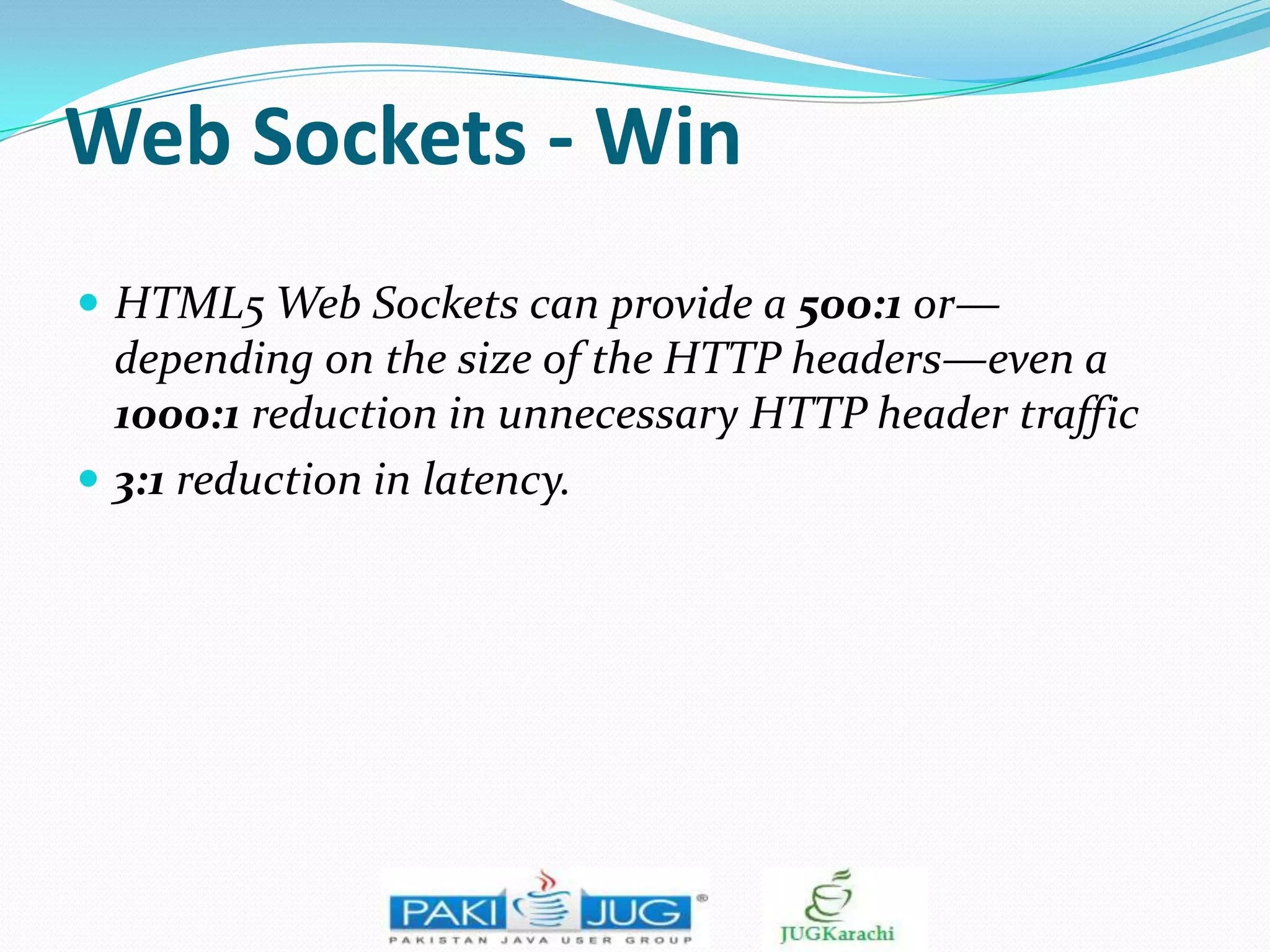
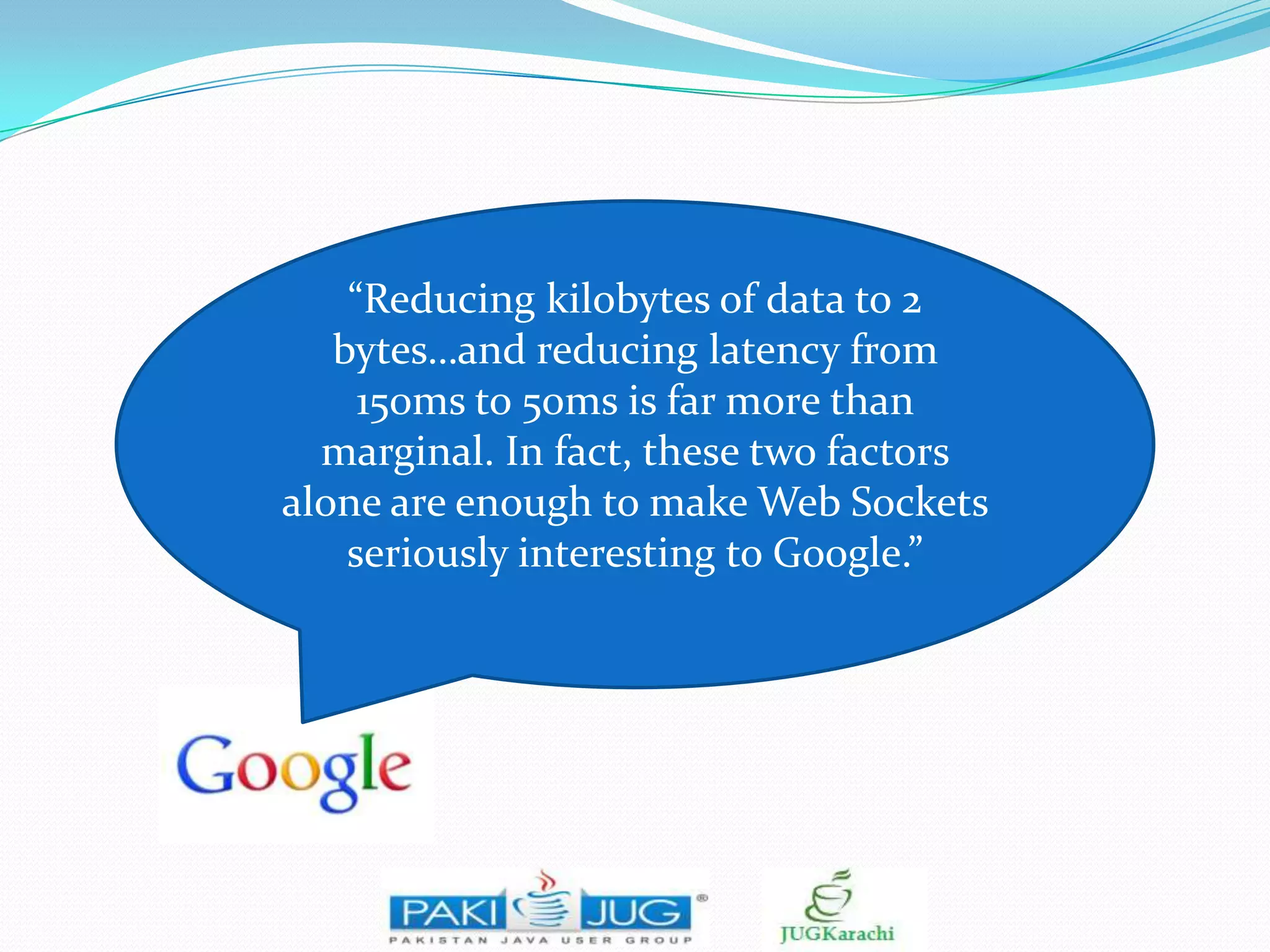
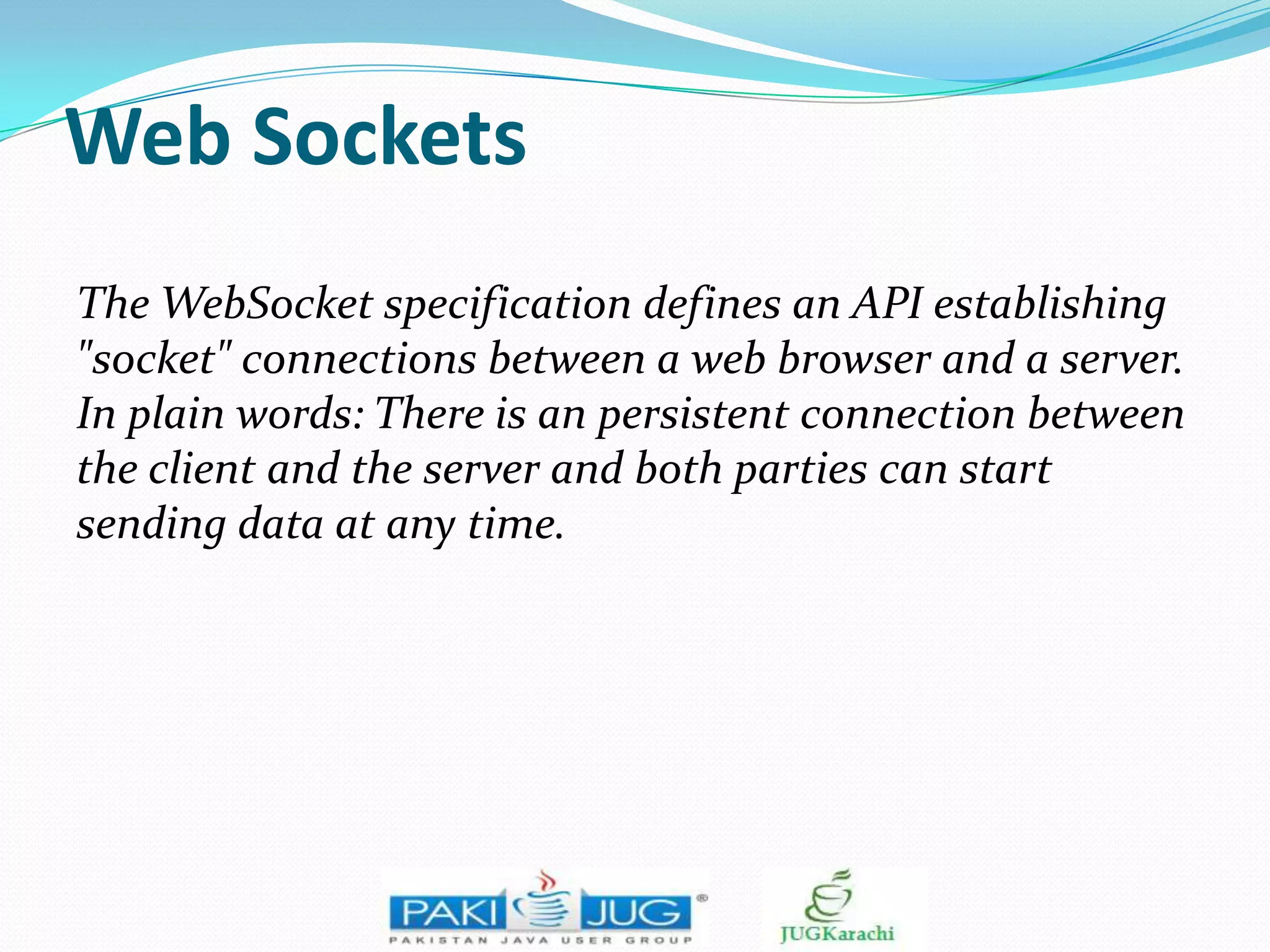
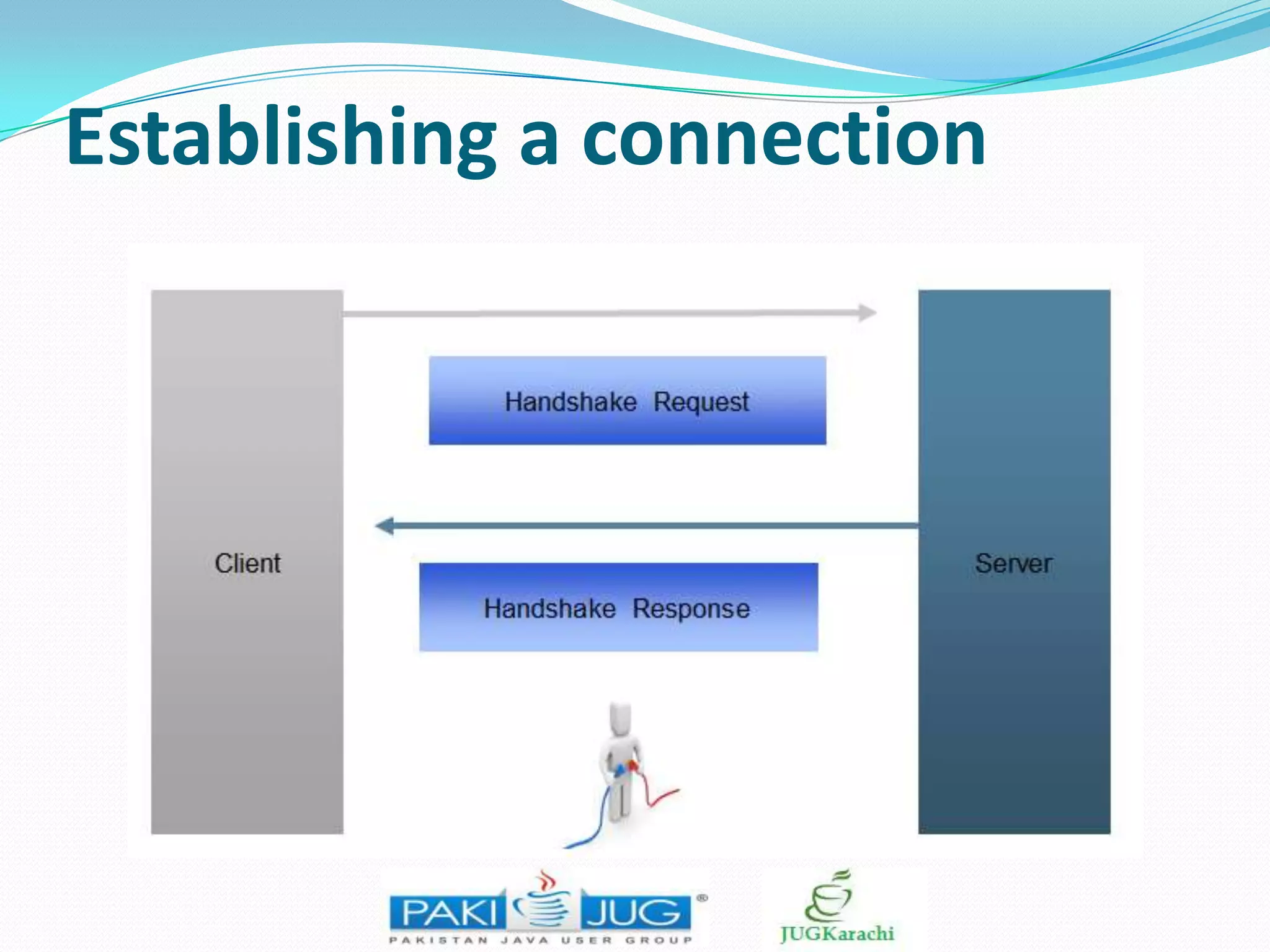
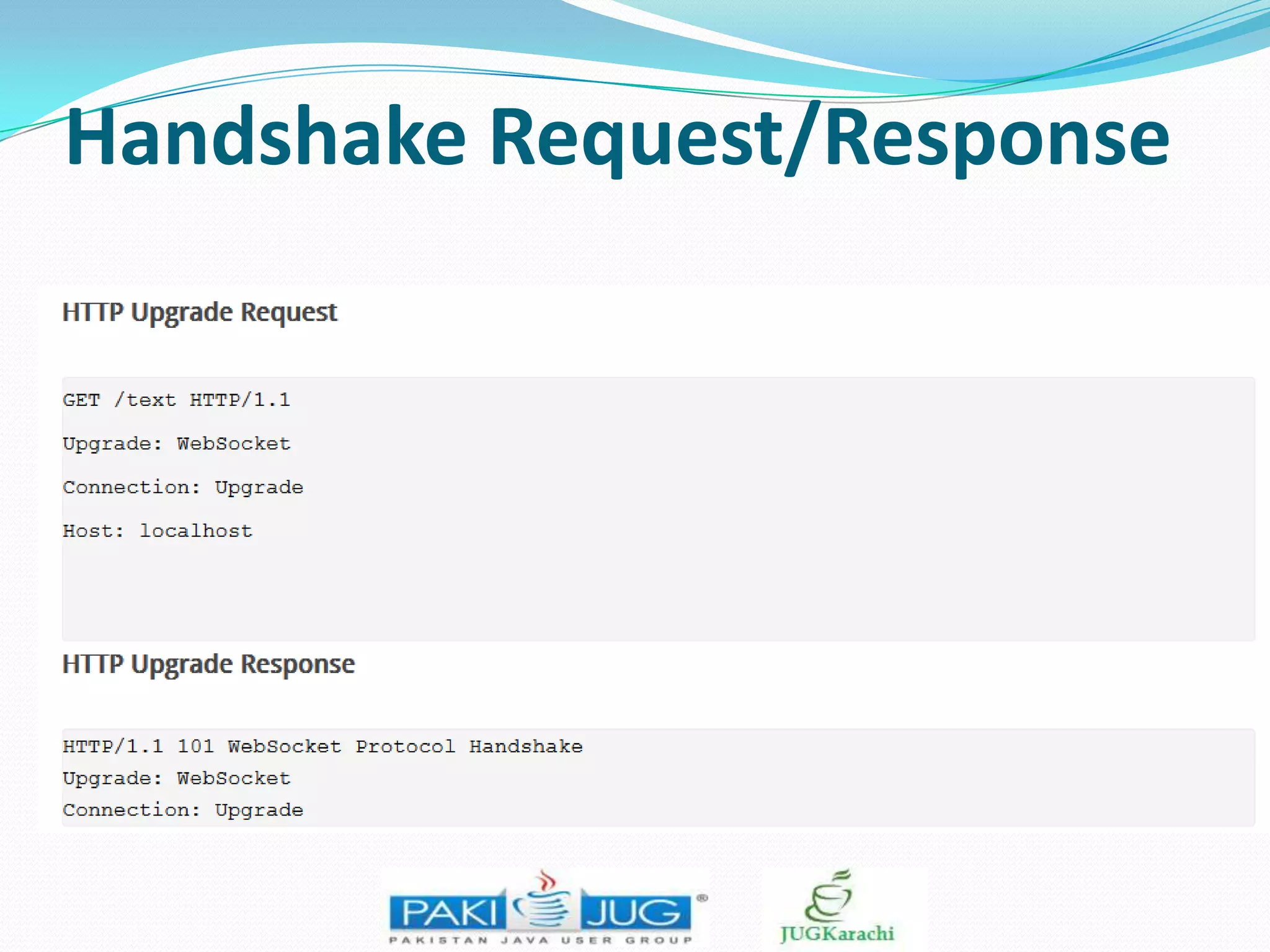
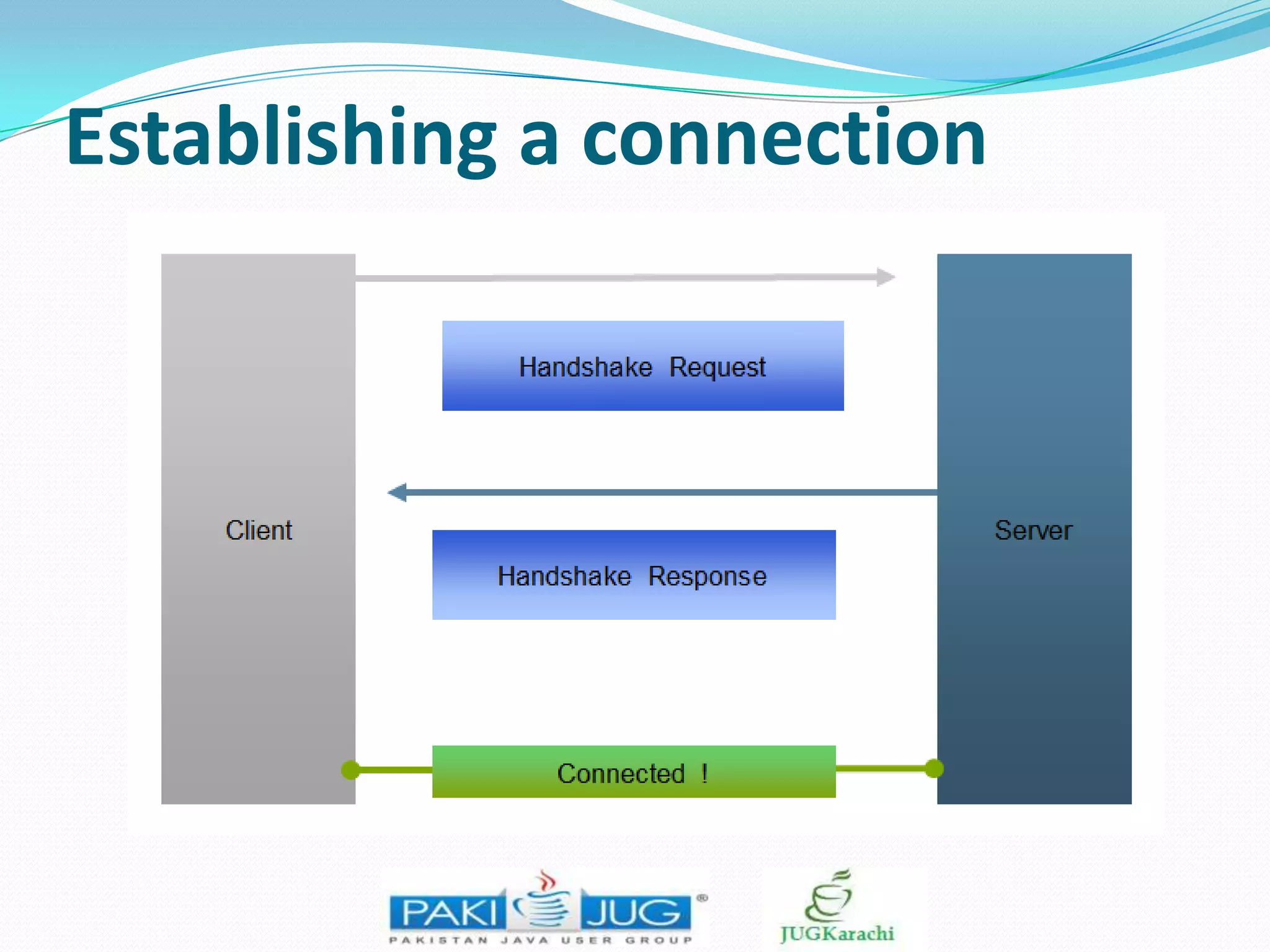
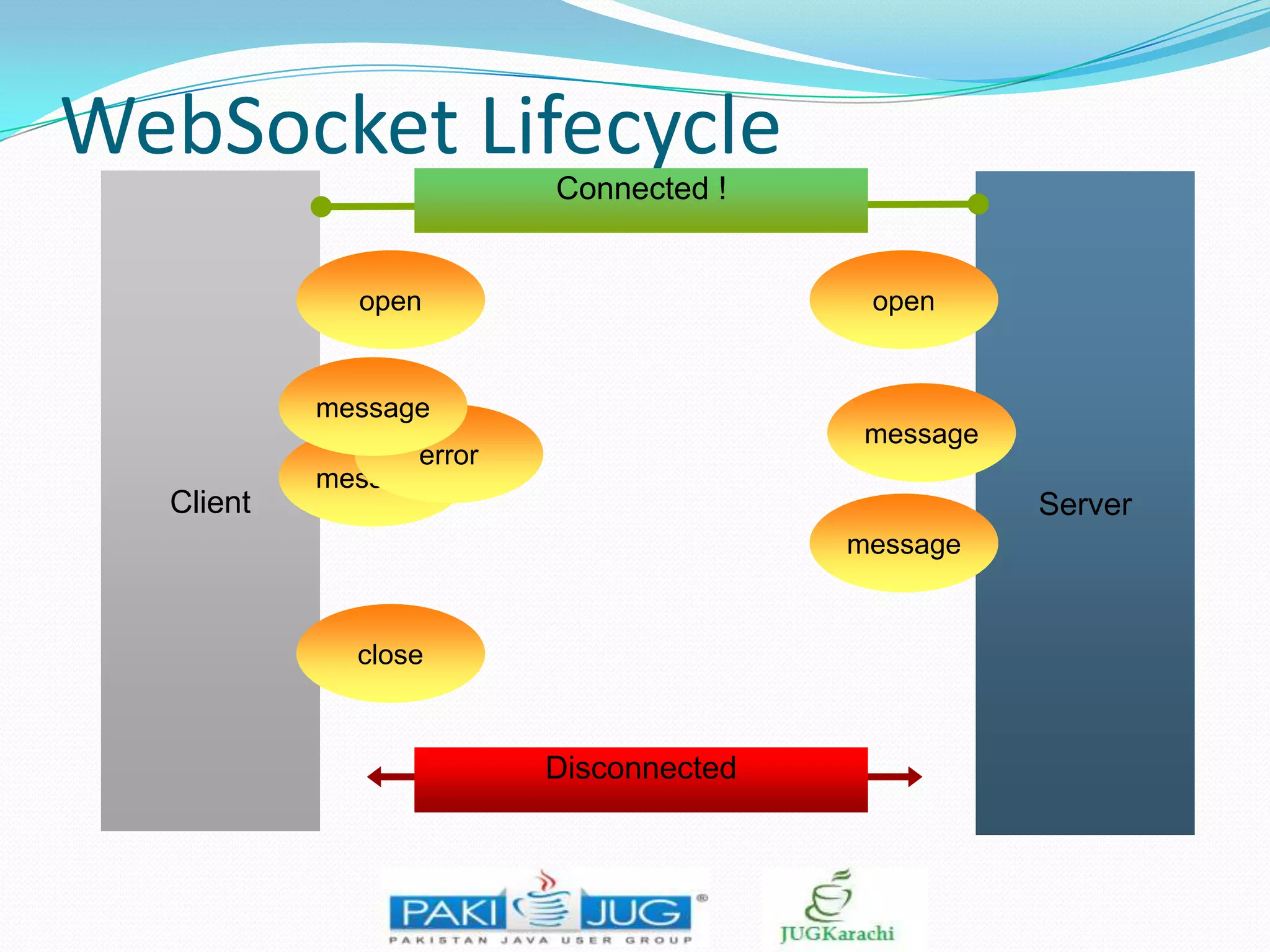
![Getting Started
You open up a WebSocket connection simply by calling the
WebSocket constructor:
var connection = new WebSocket('ws://localhost:8080/chat', ['soap', 'xmpp']);
Notice the ws:. This is the new URL schema for WebSocket connections.
There is also wss: for secure WebSocket connection the same way https: is
used for secure HTTP connections.](https://image.slidesharecdn.com/javaee7-websockets-140107055901-phpapp01/75/WebSockets-in-JEE-7-31-2048.jpg)
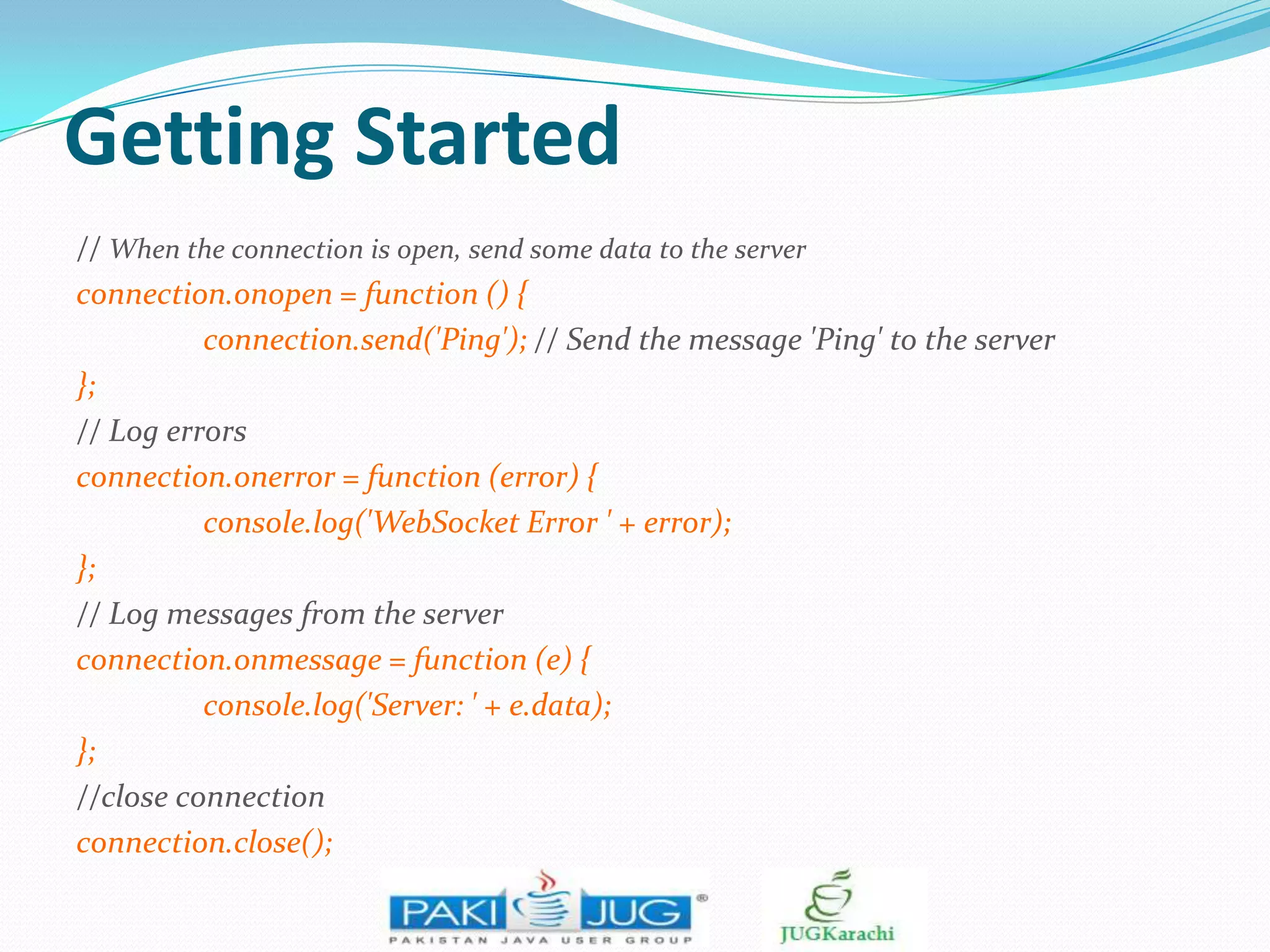
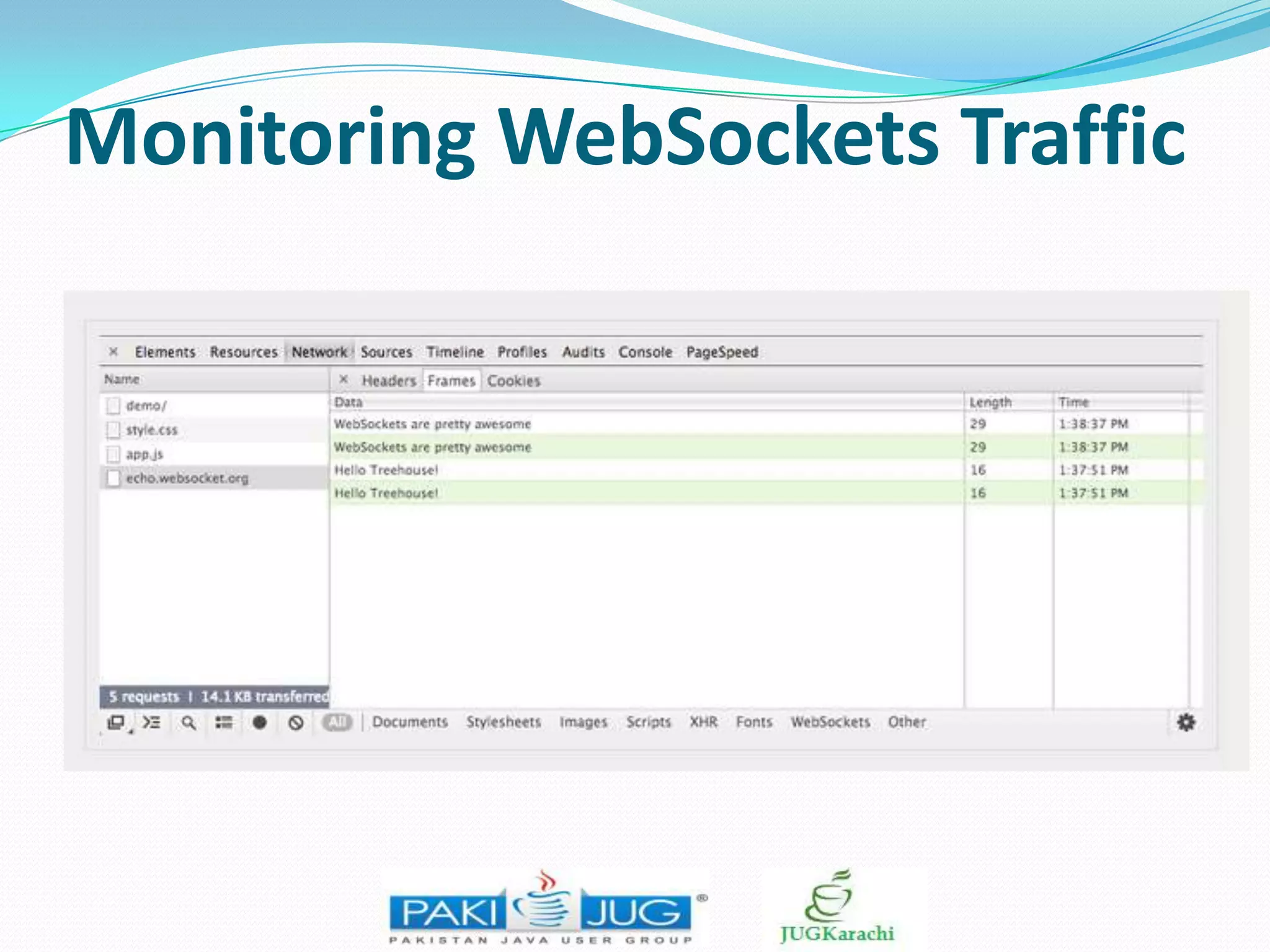
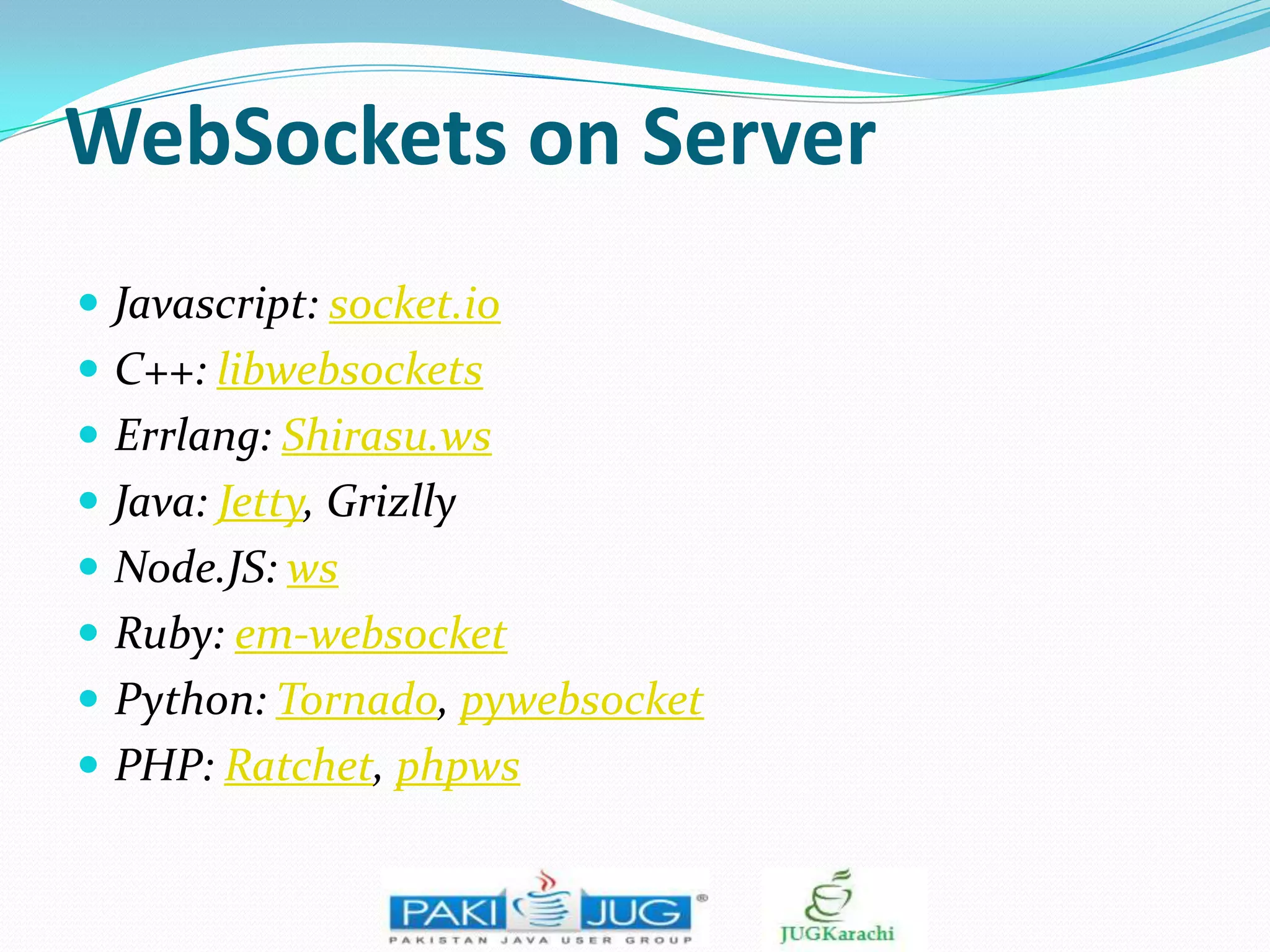
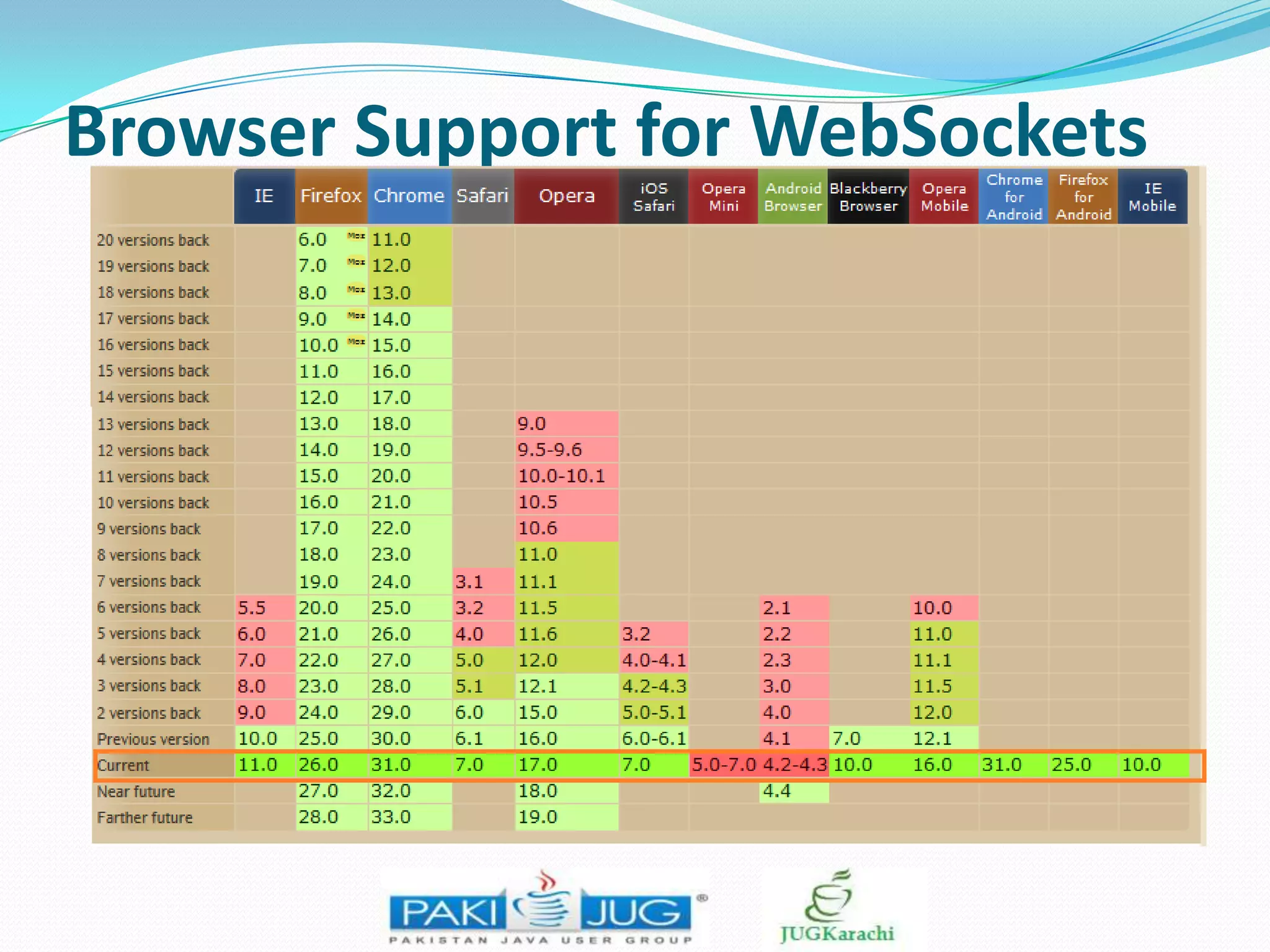

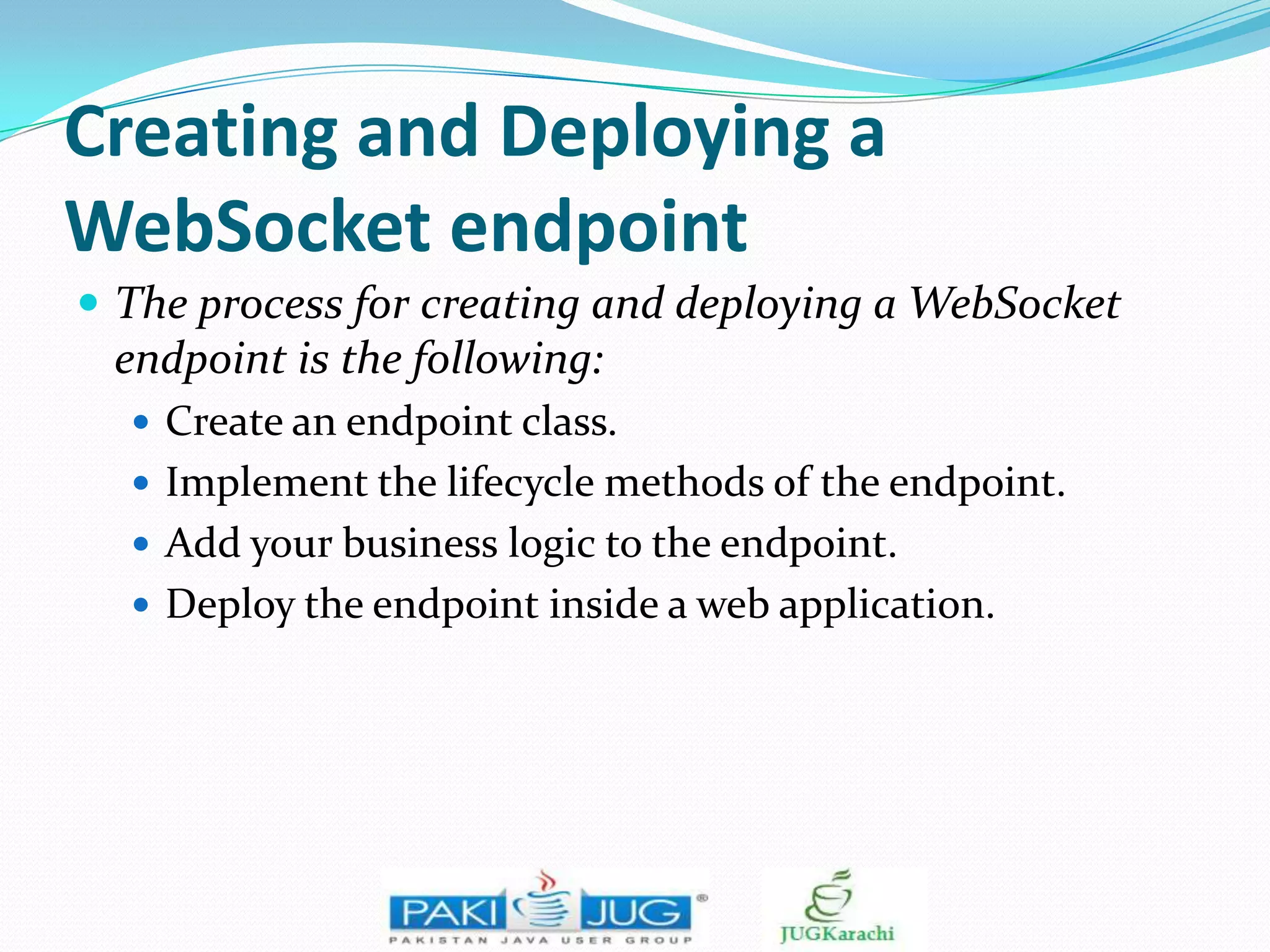
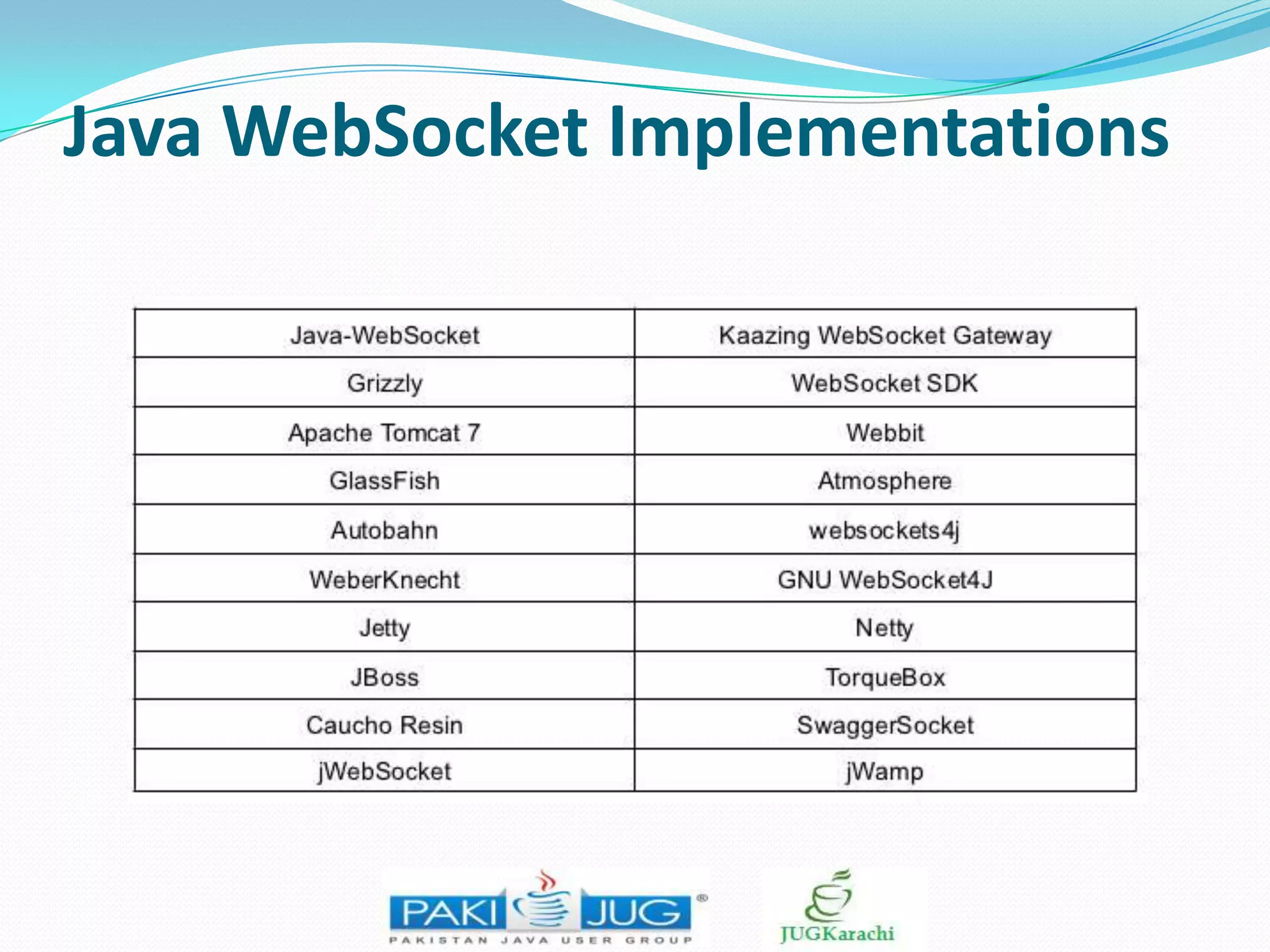
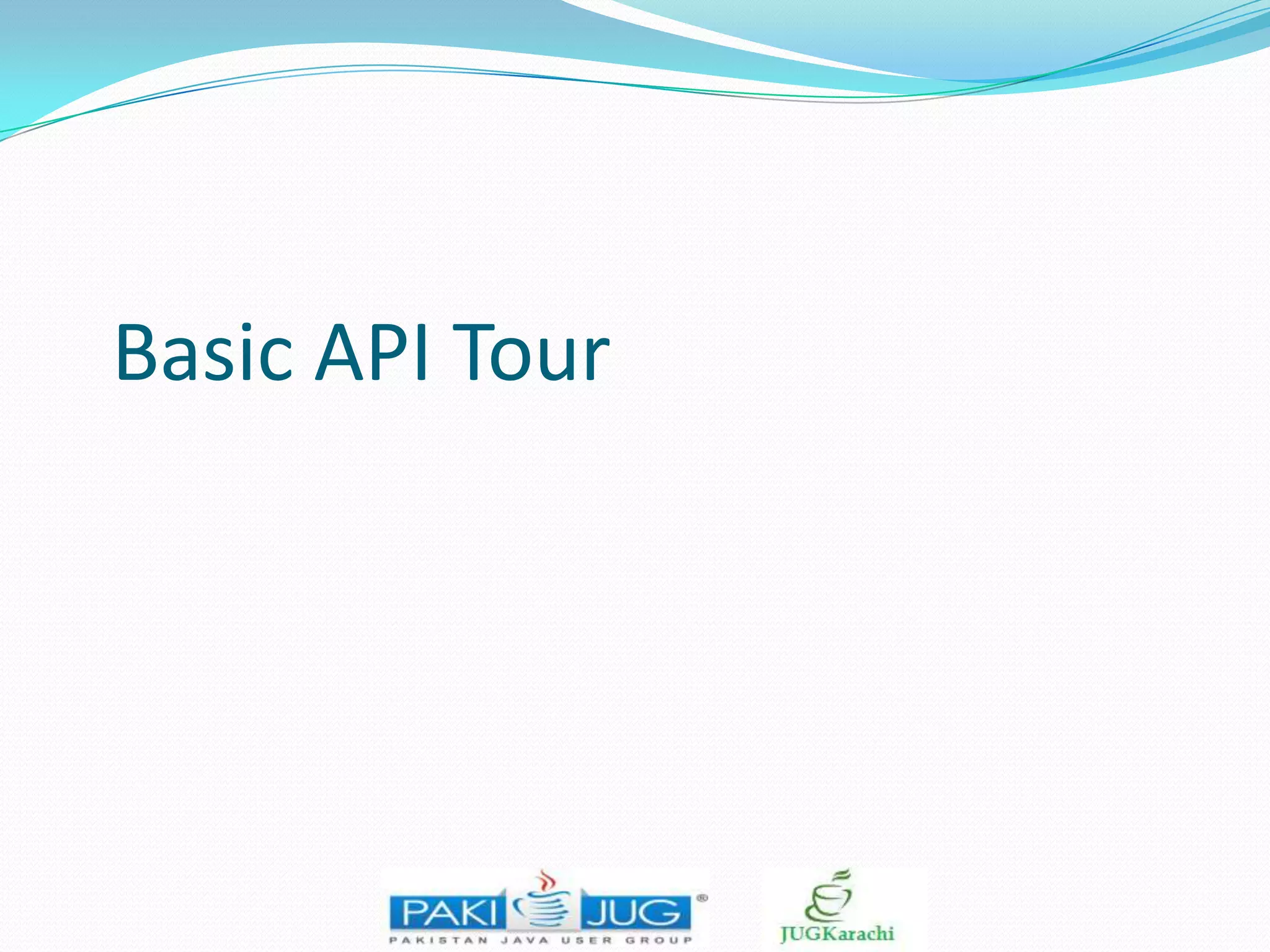
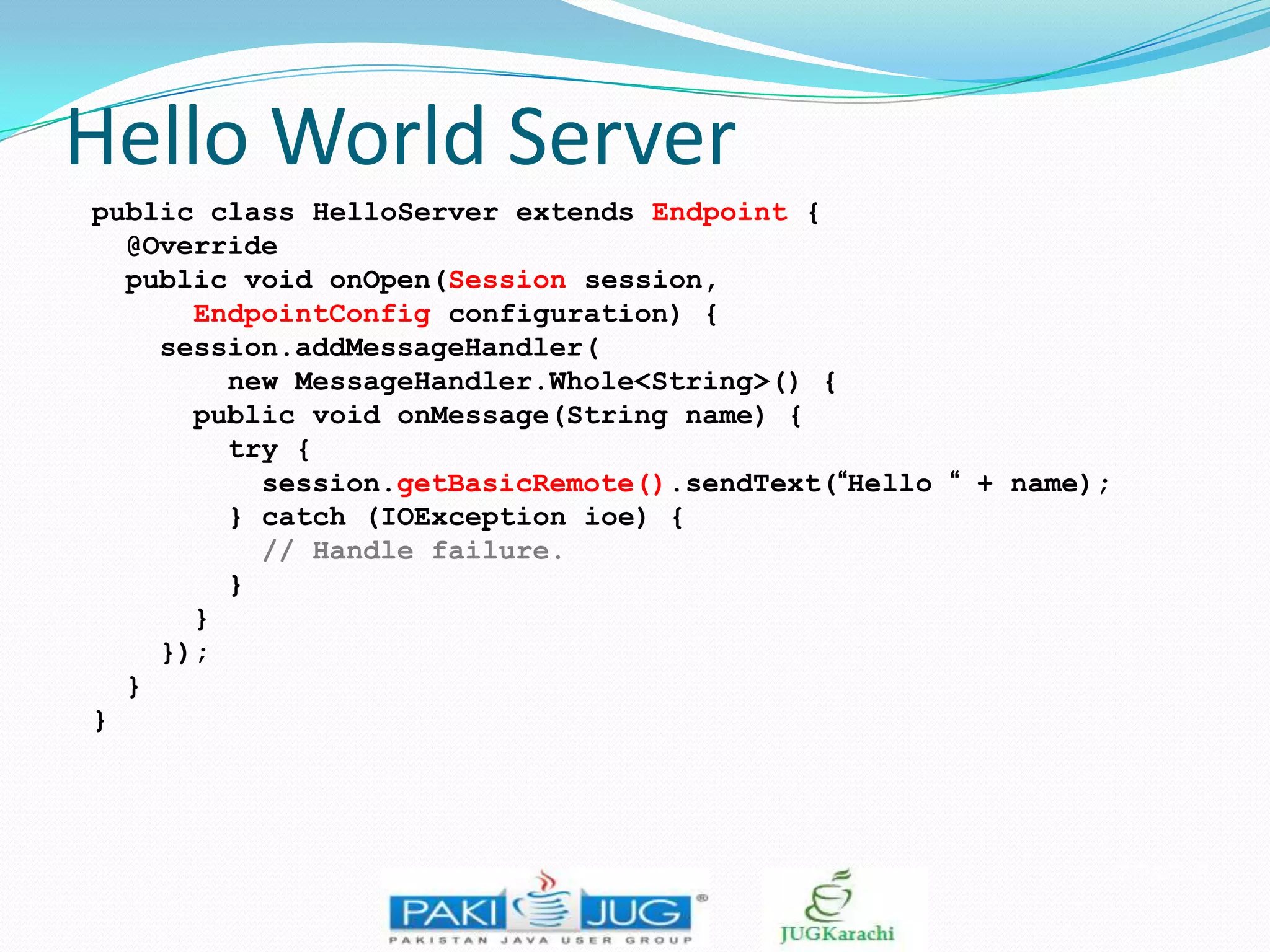
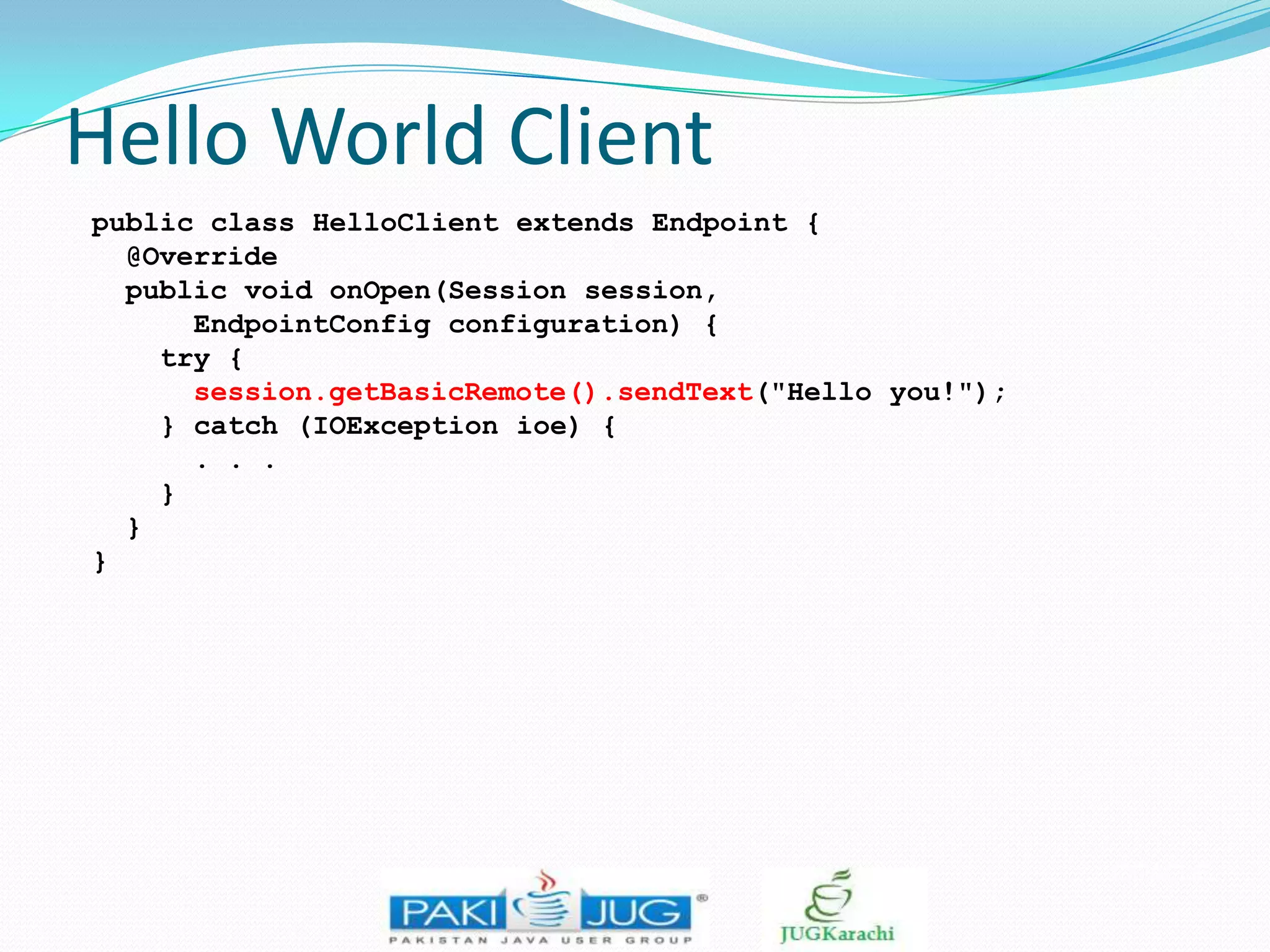
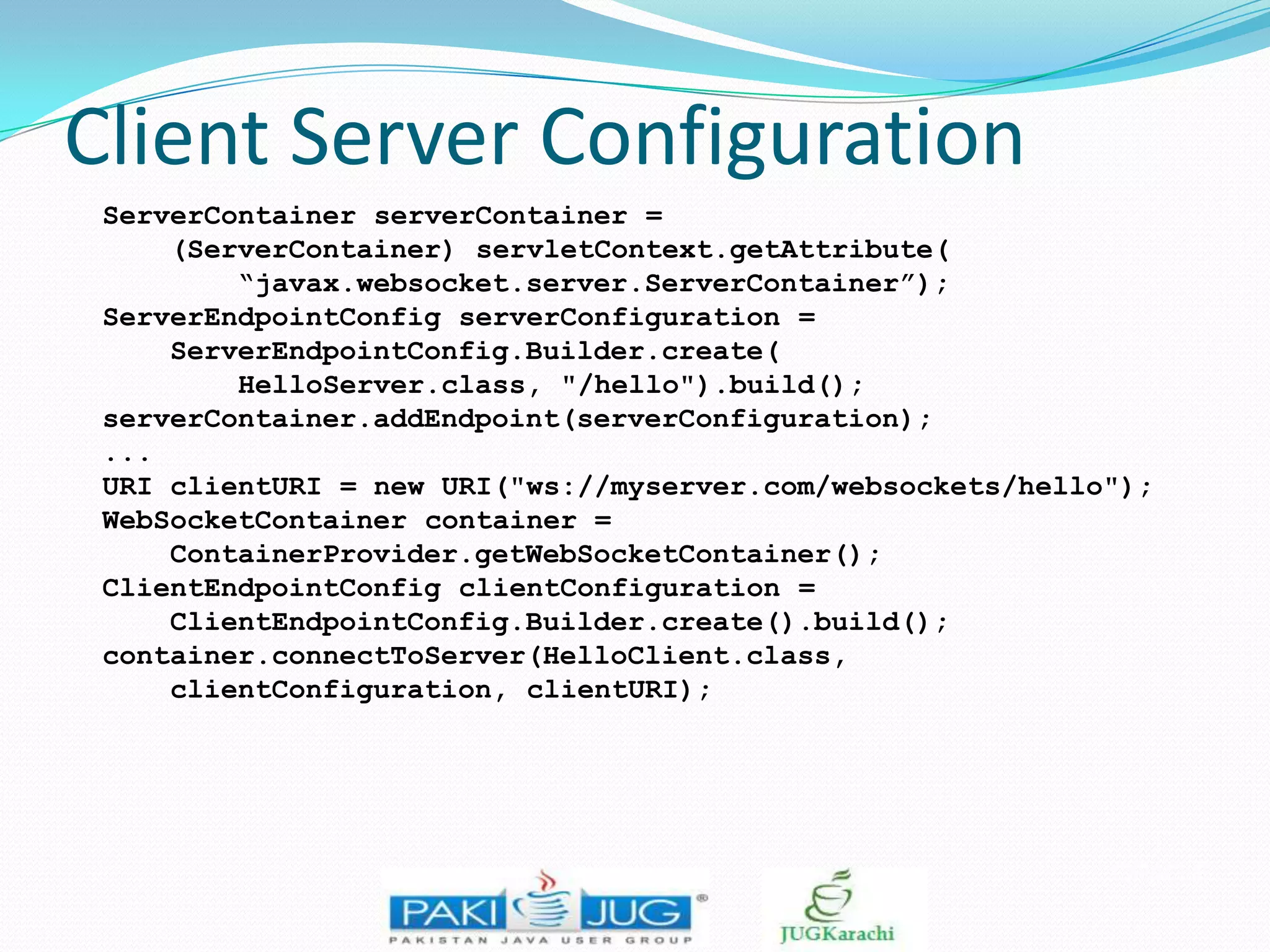
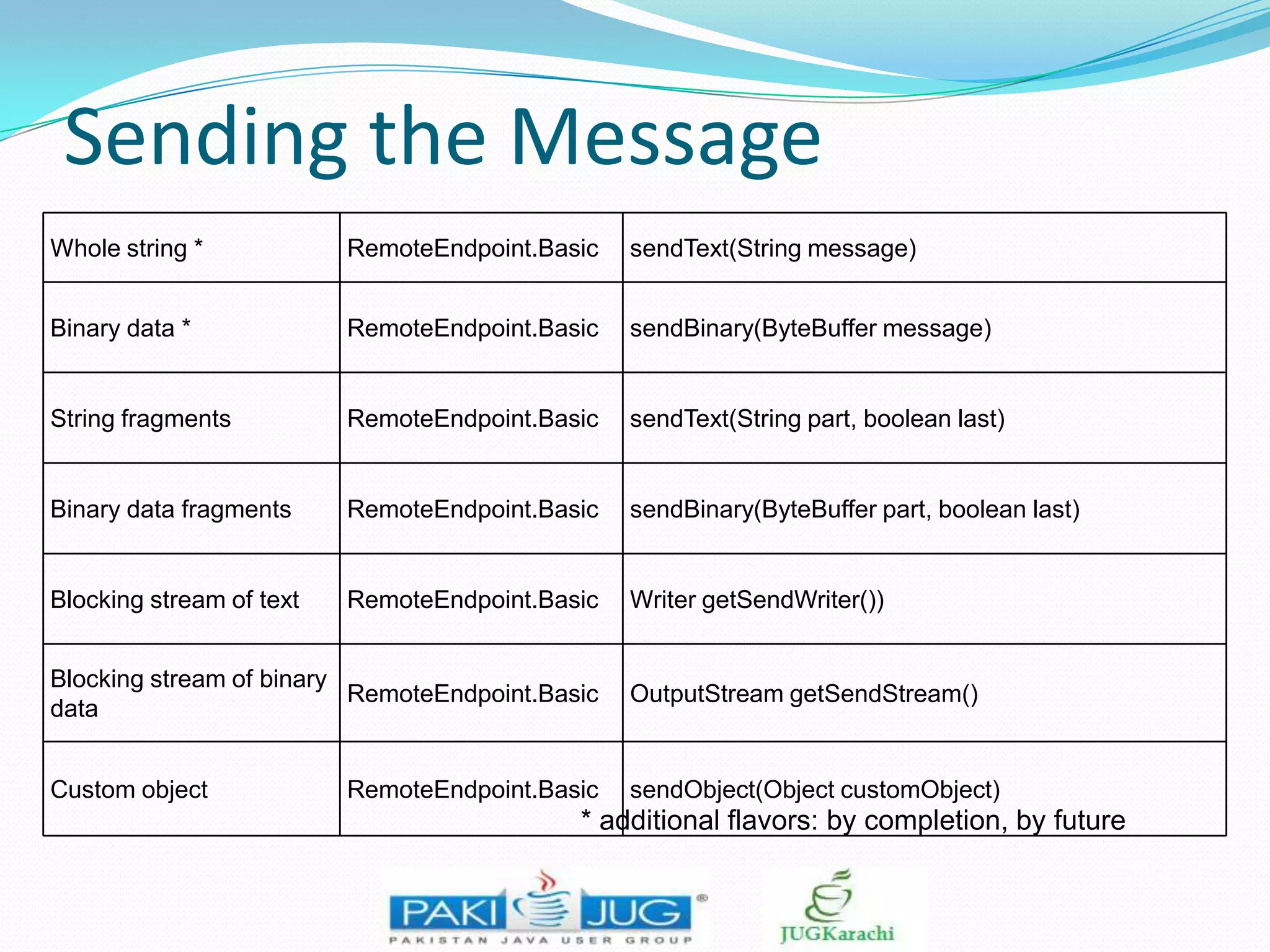
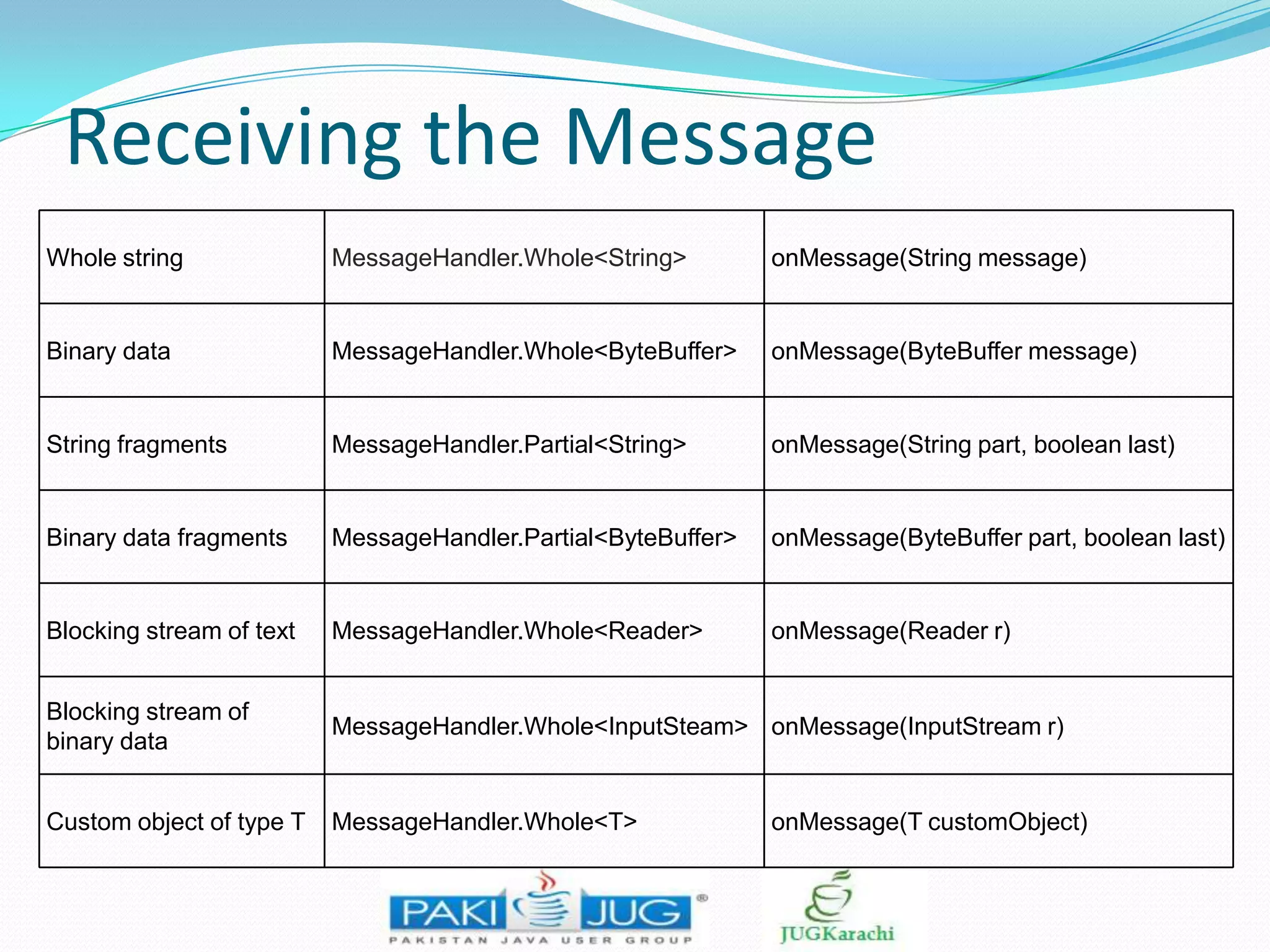
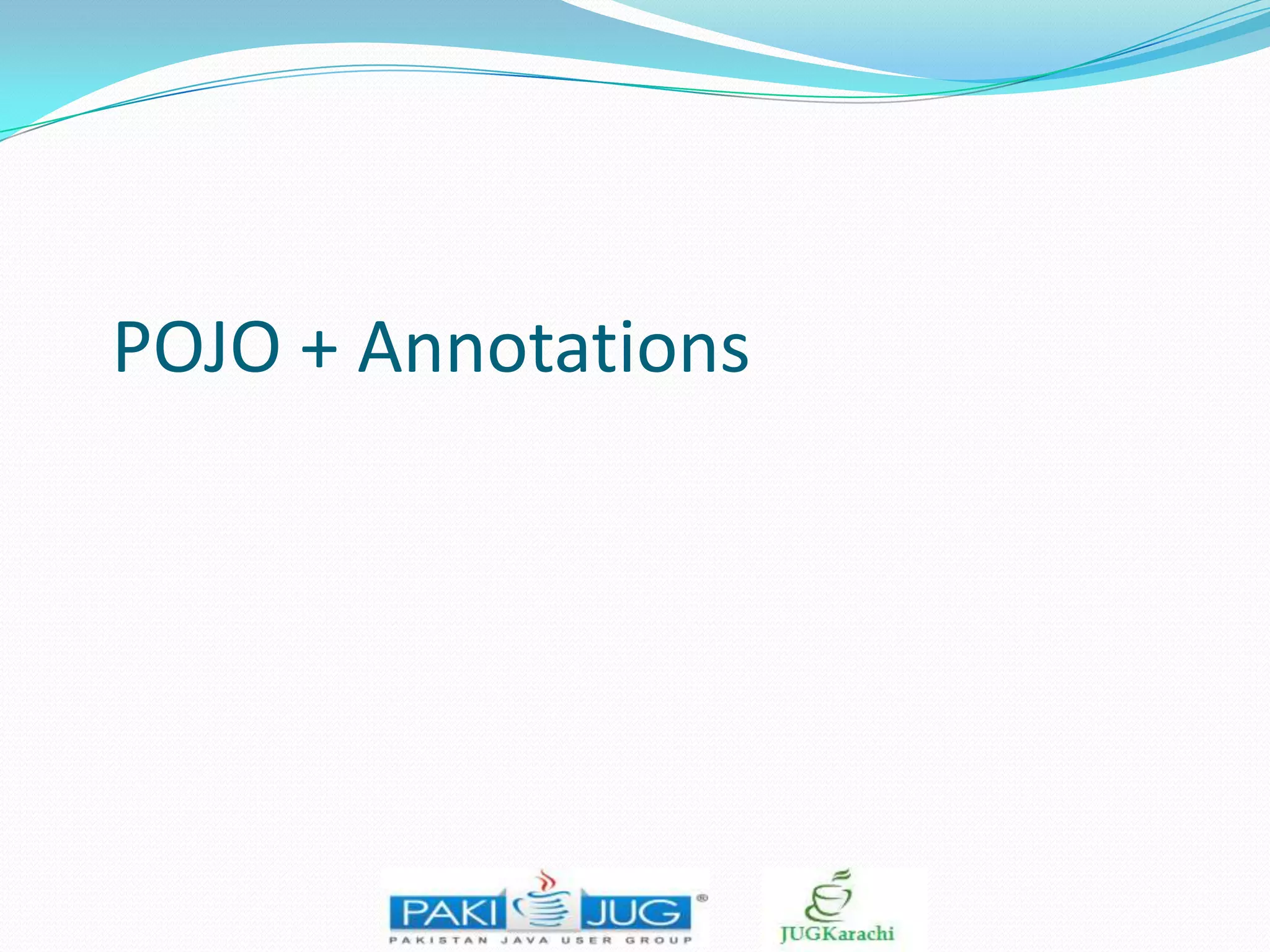

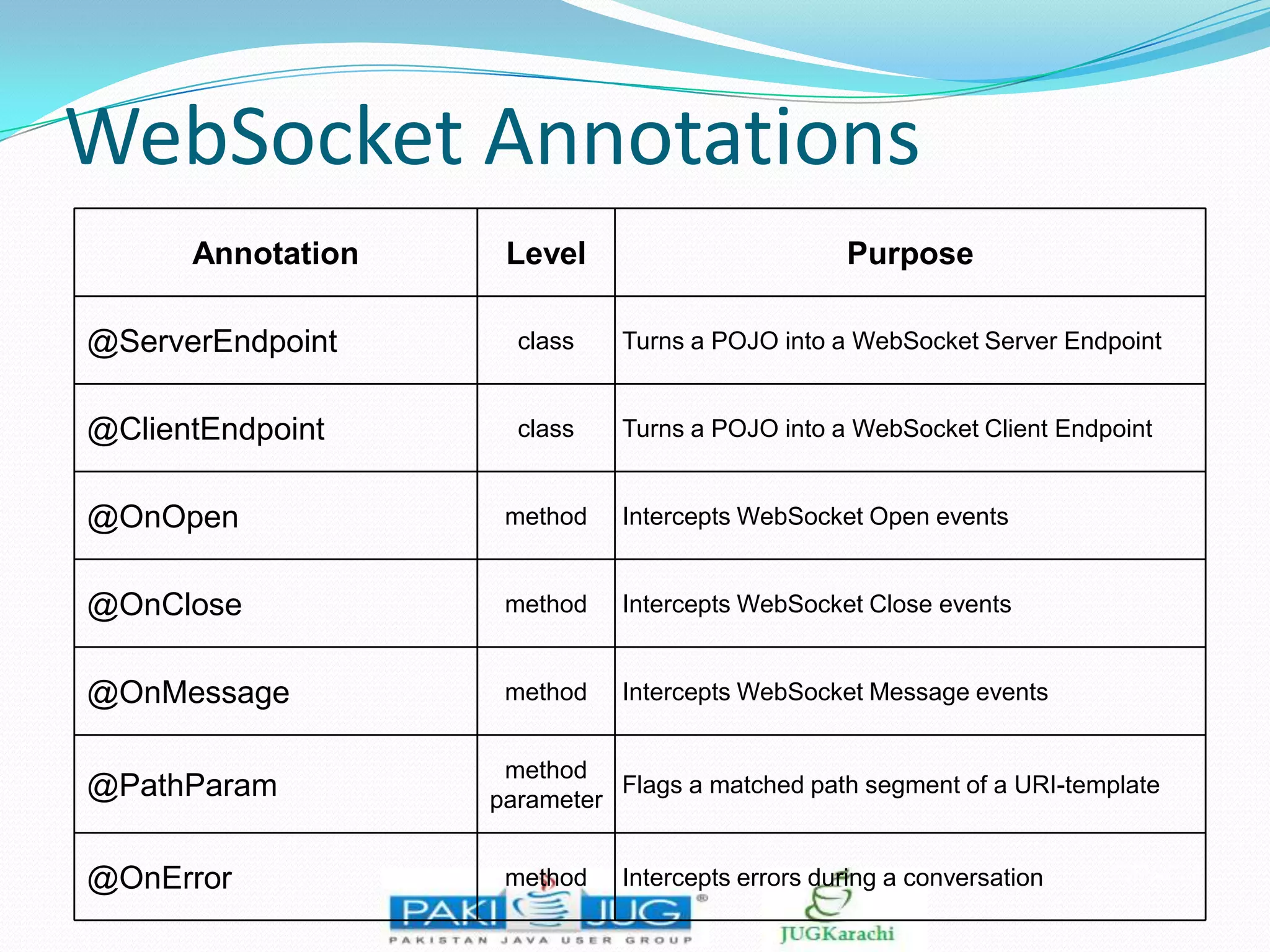
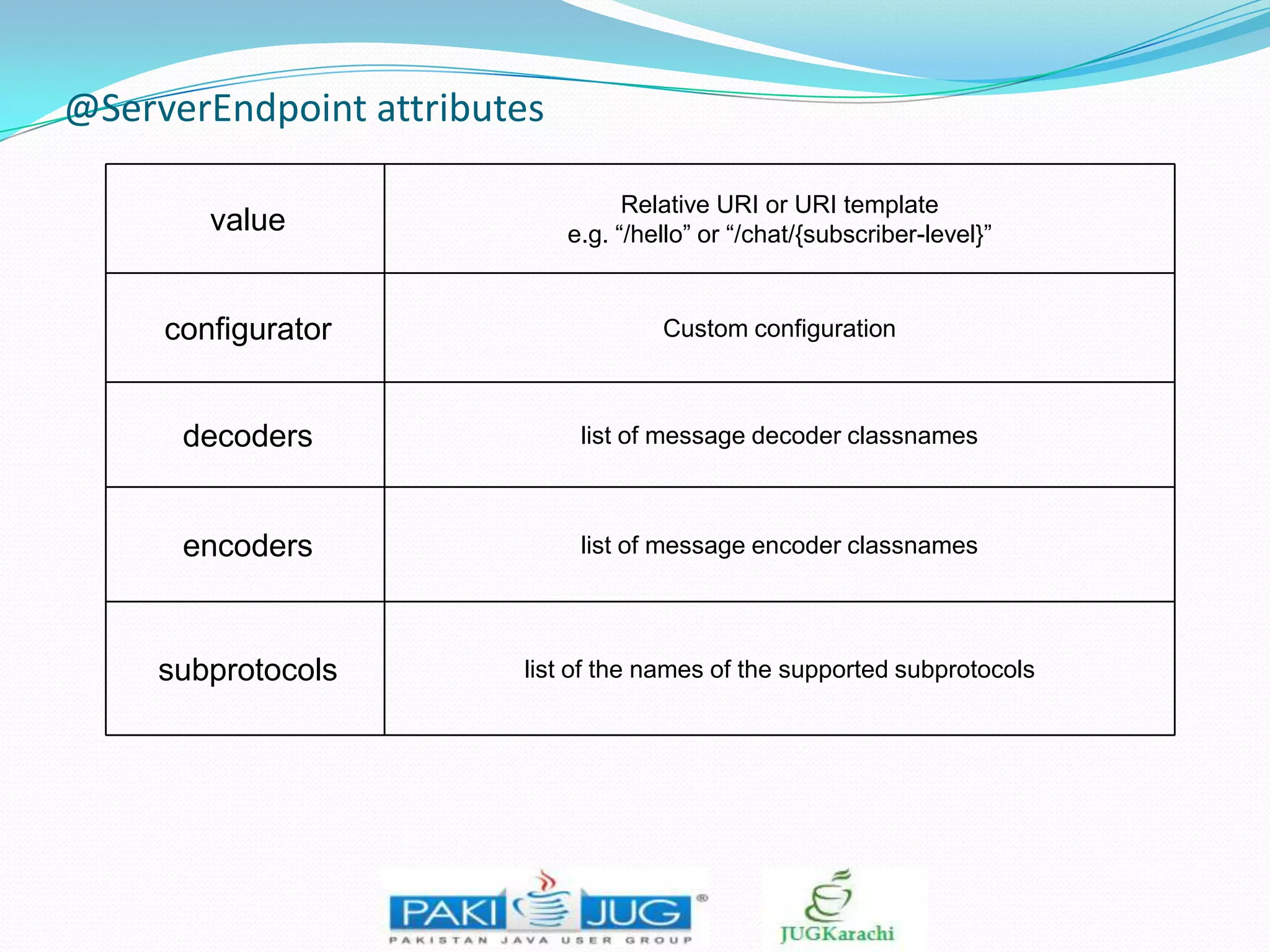
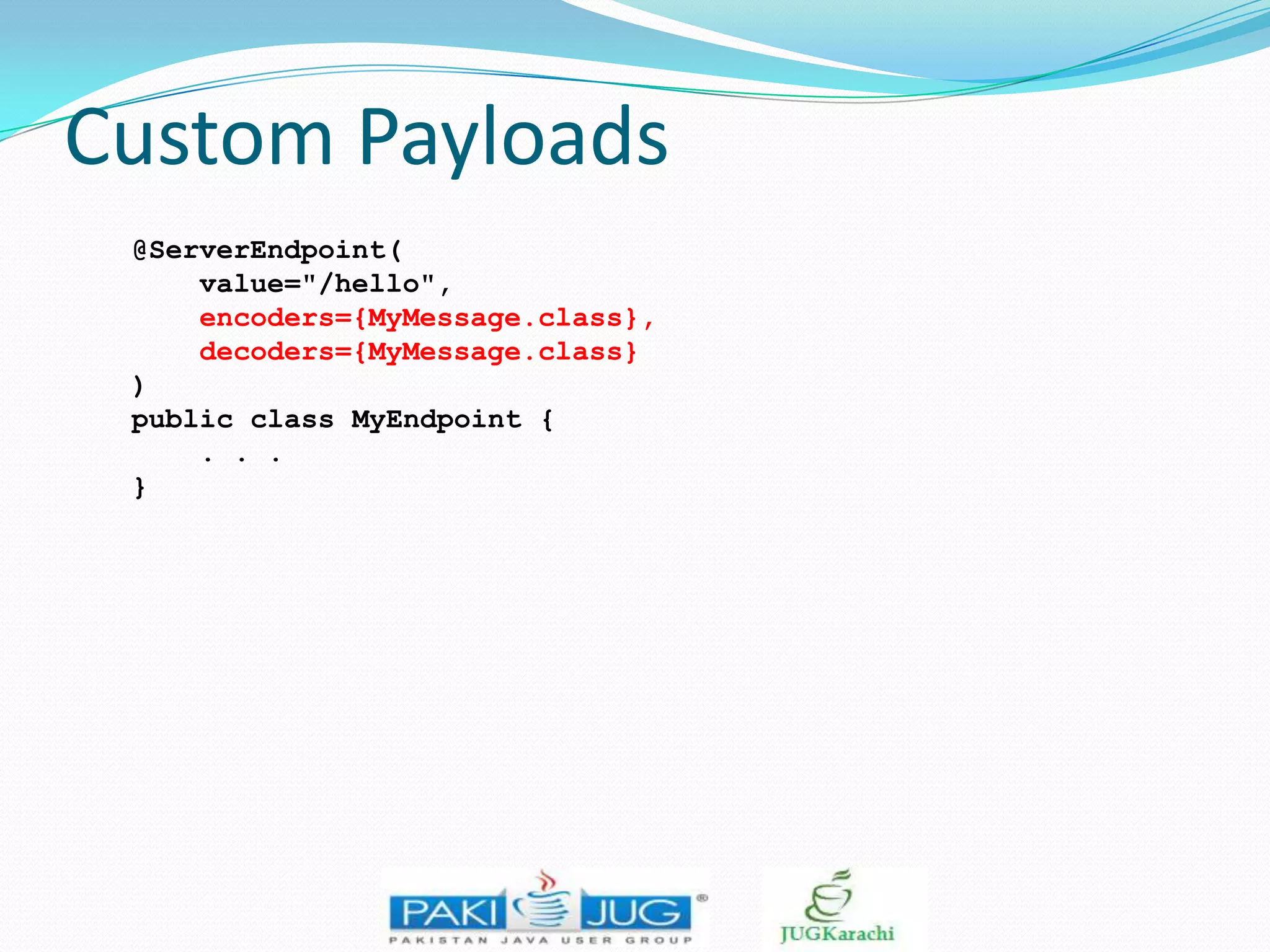
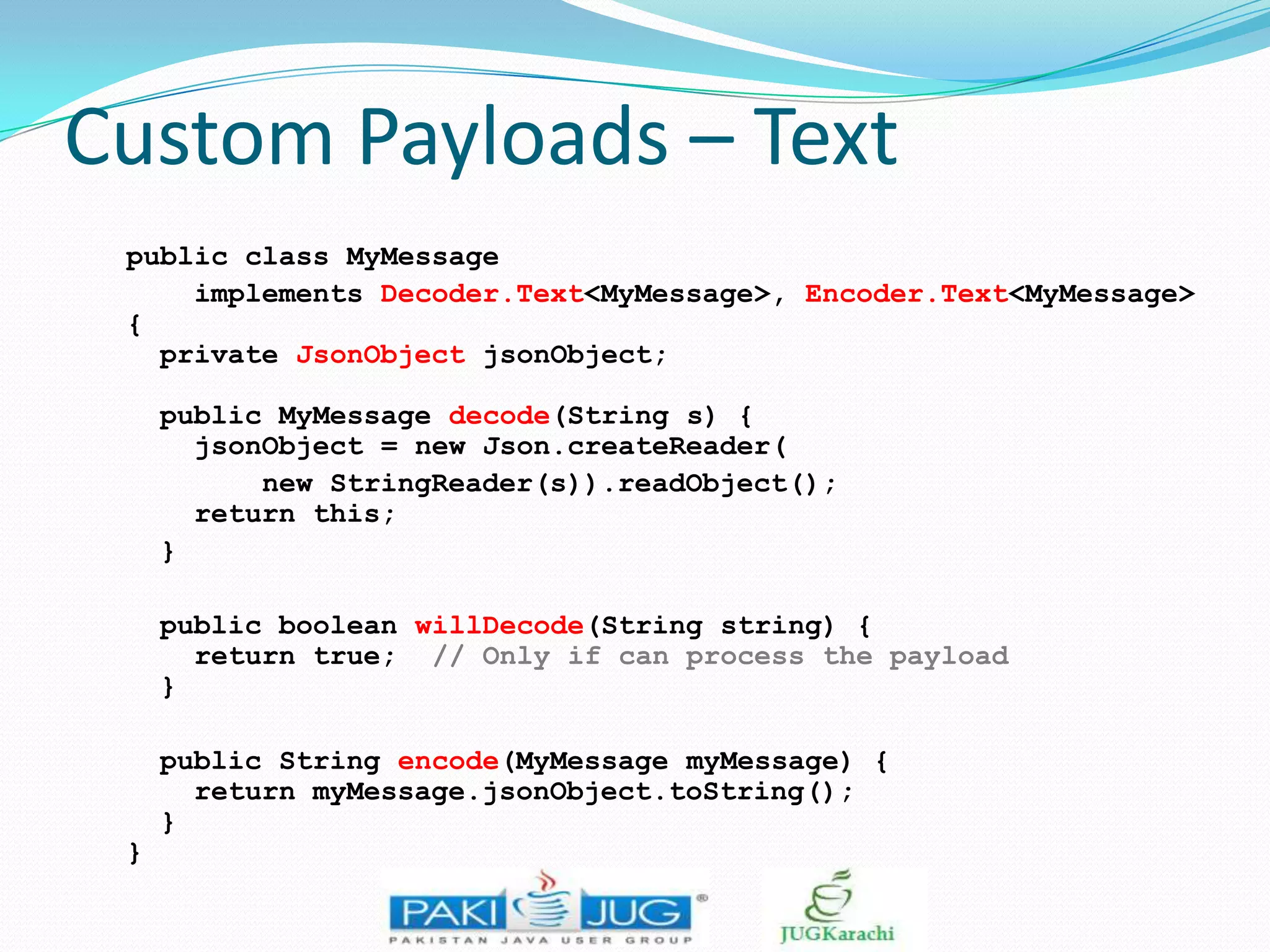
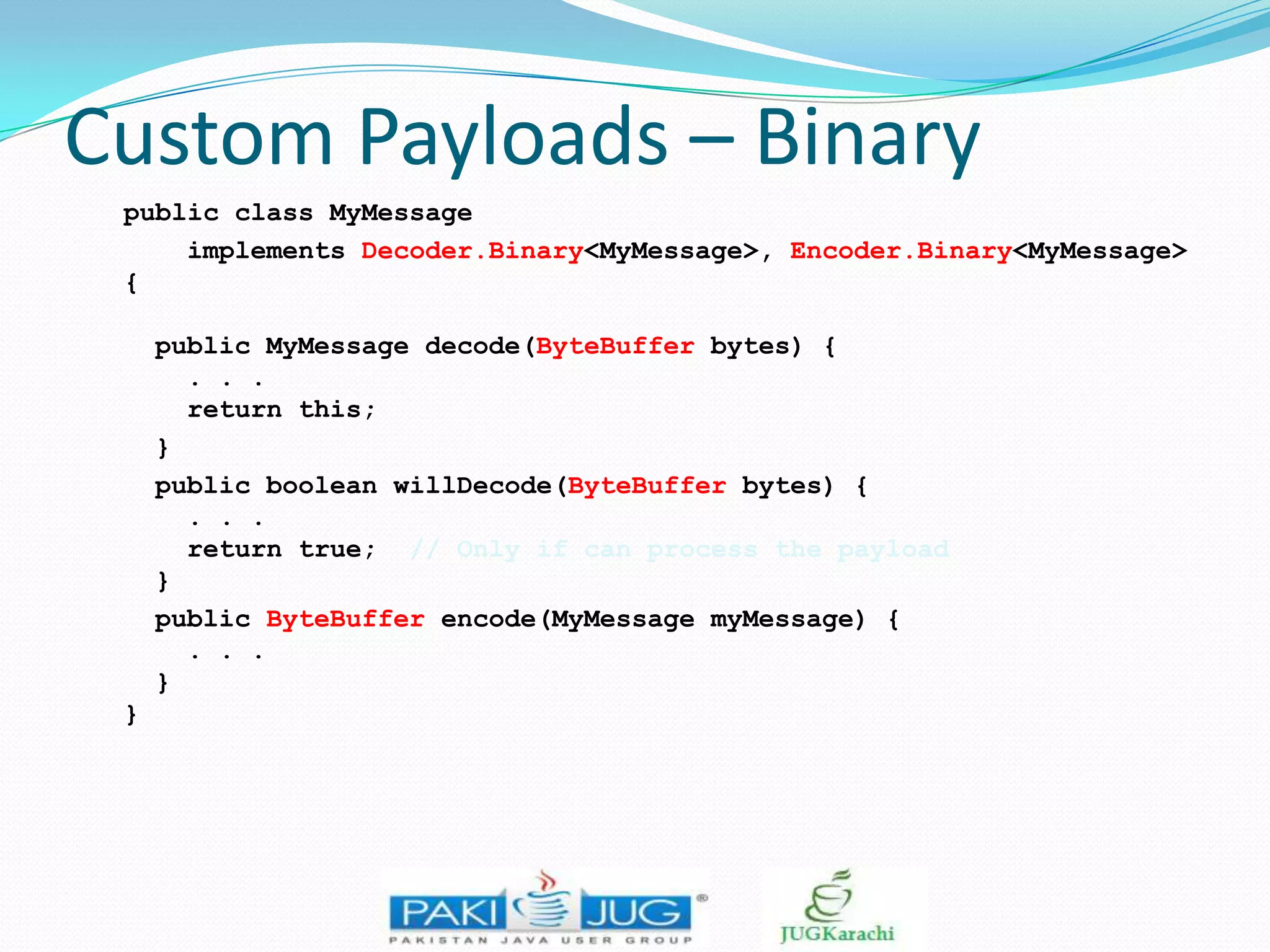
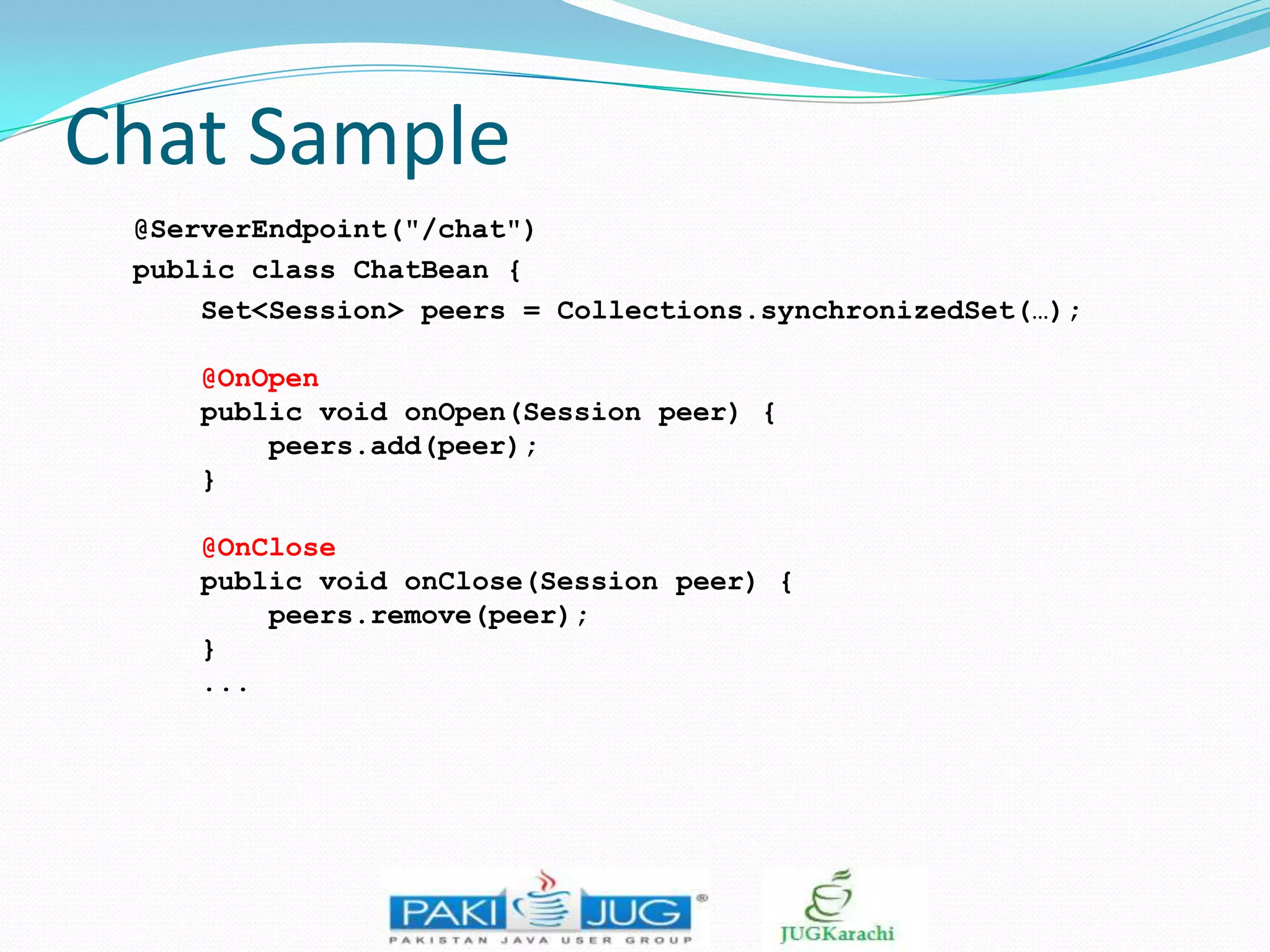
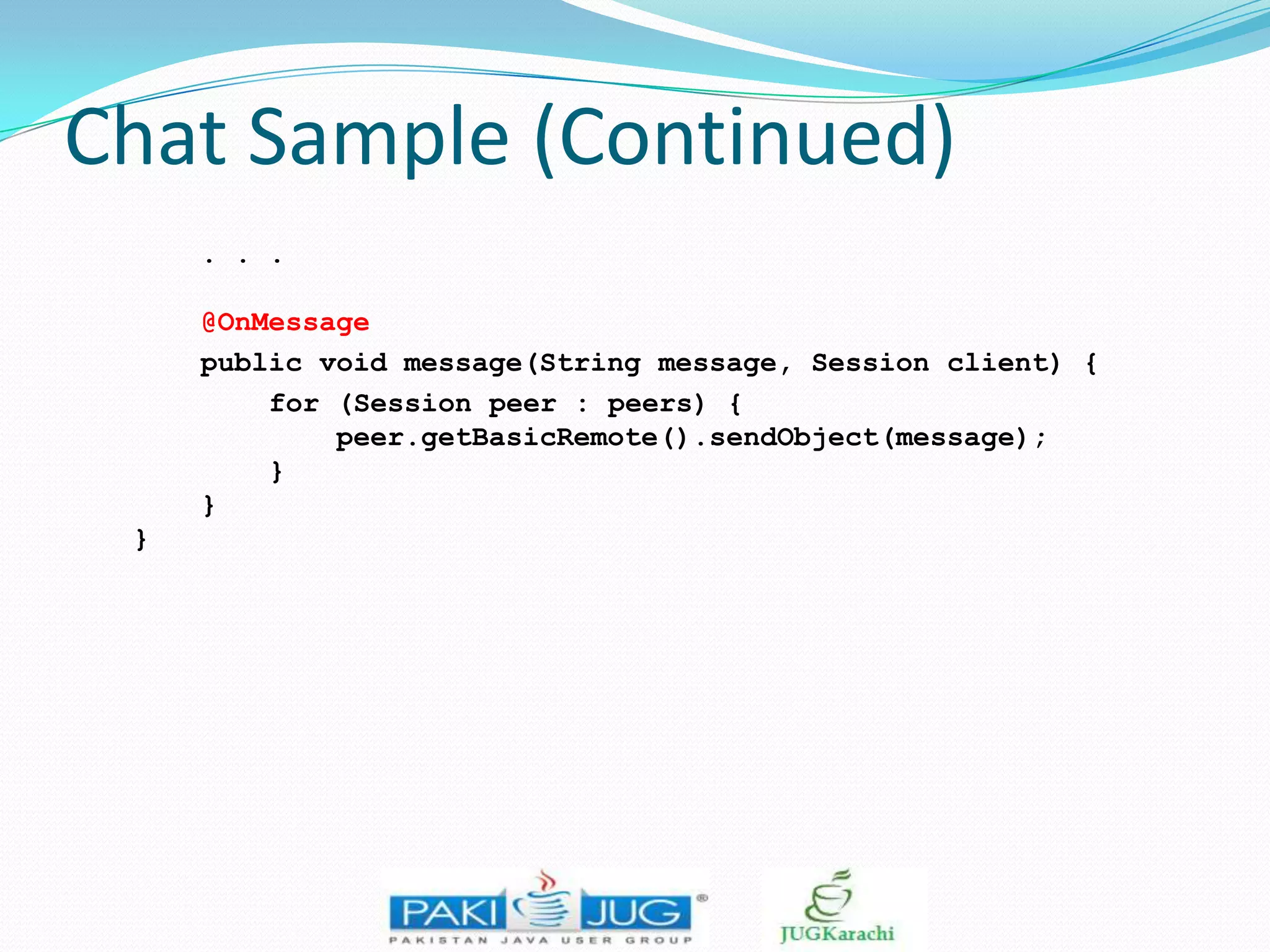
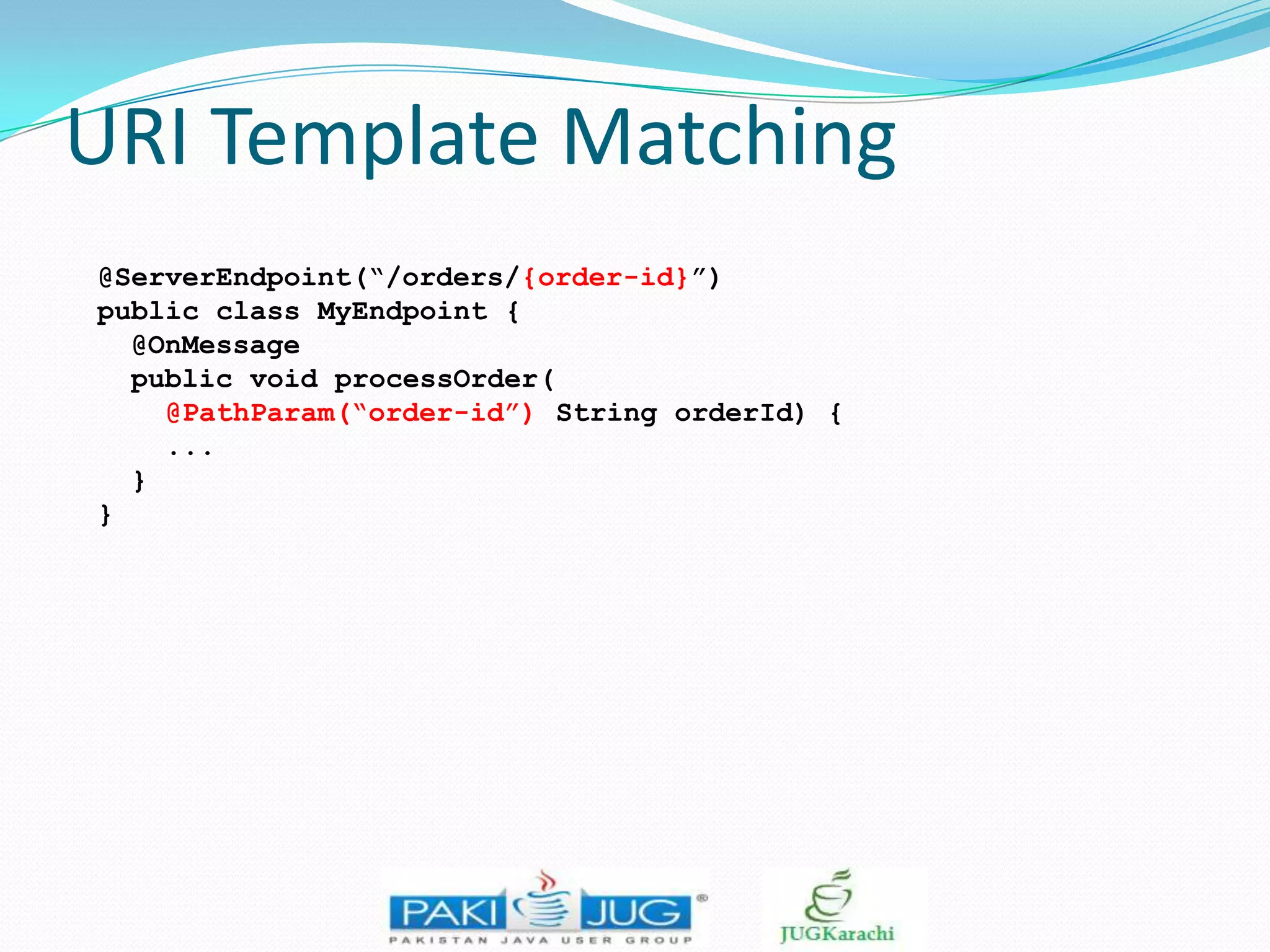
![@OnMessage Methods
A parameter type that can be decoded in incoming
message
String, primitive, Reader, ByteBuffer, byte[], InputStream,
or any type for which there is a decoder
An optional Session parameter
Boolean partial flag
0..n String parameters annotated with @PathParameter
A return type that can be encoded in outgoing message
String, primitive, Reader, ByteBuffer, byte[], InputStream,
or any type for which there is an encoder](https://image.slidesharecdn.com/javaee7-websockets-140107055901-phpapp01/75/WebSockets-in-JEE-7-55-2048.jpg)
